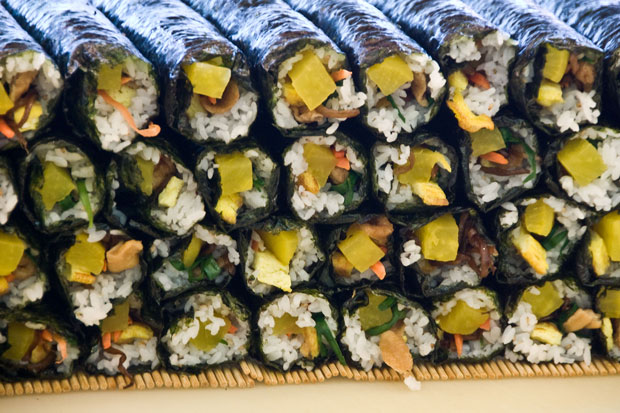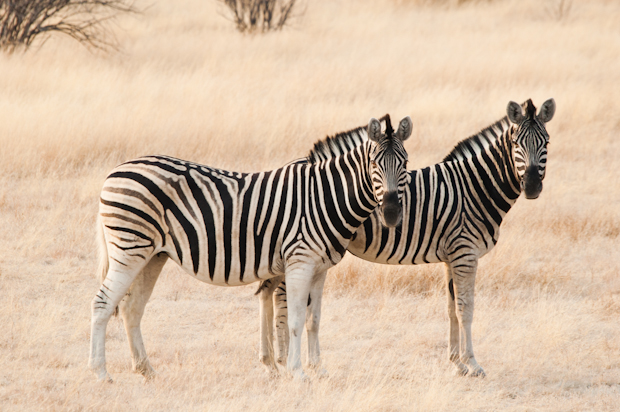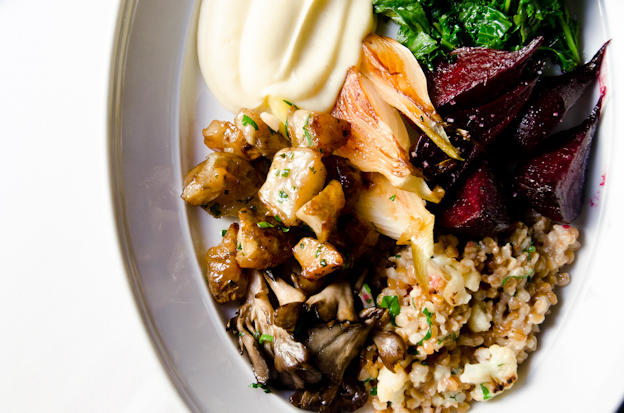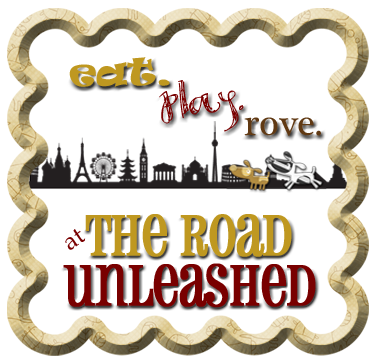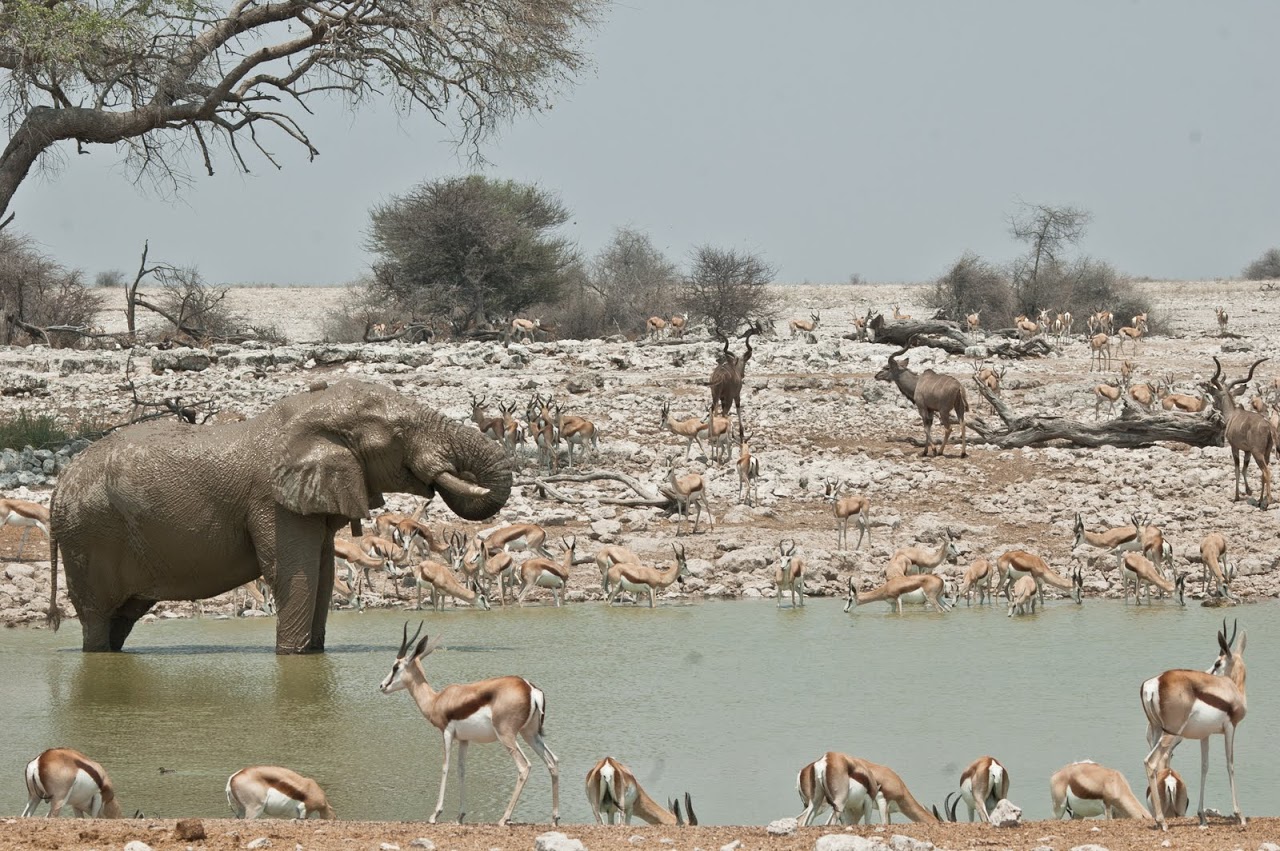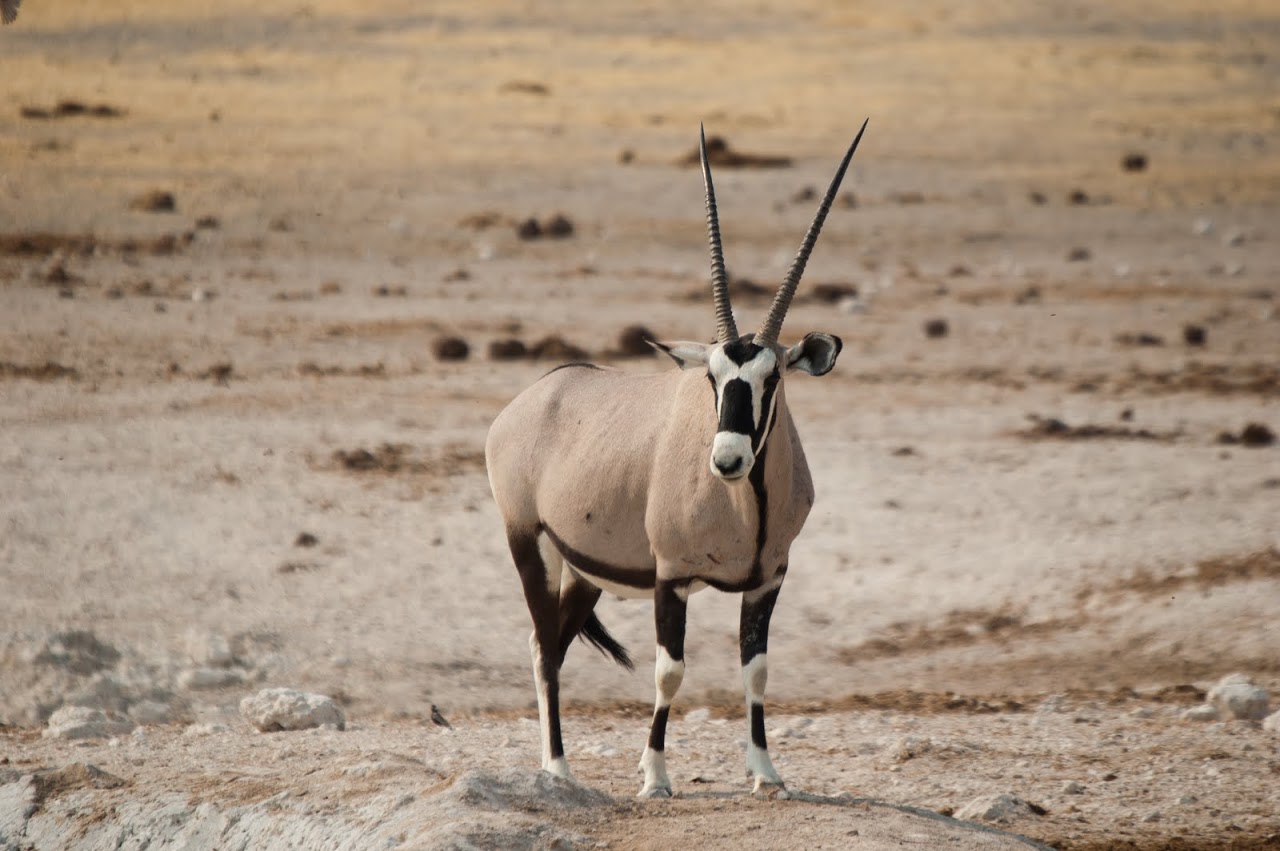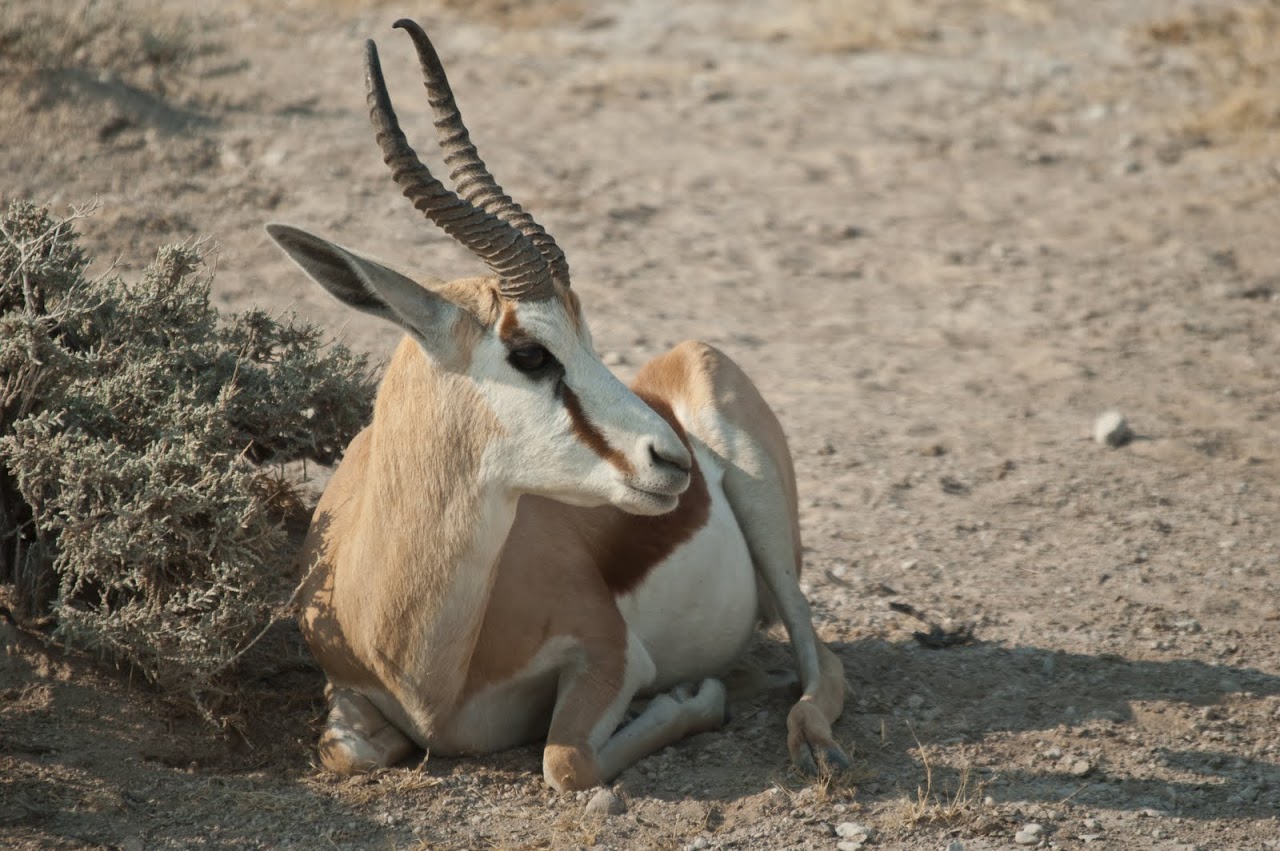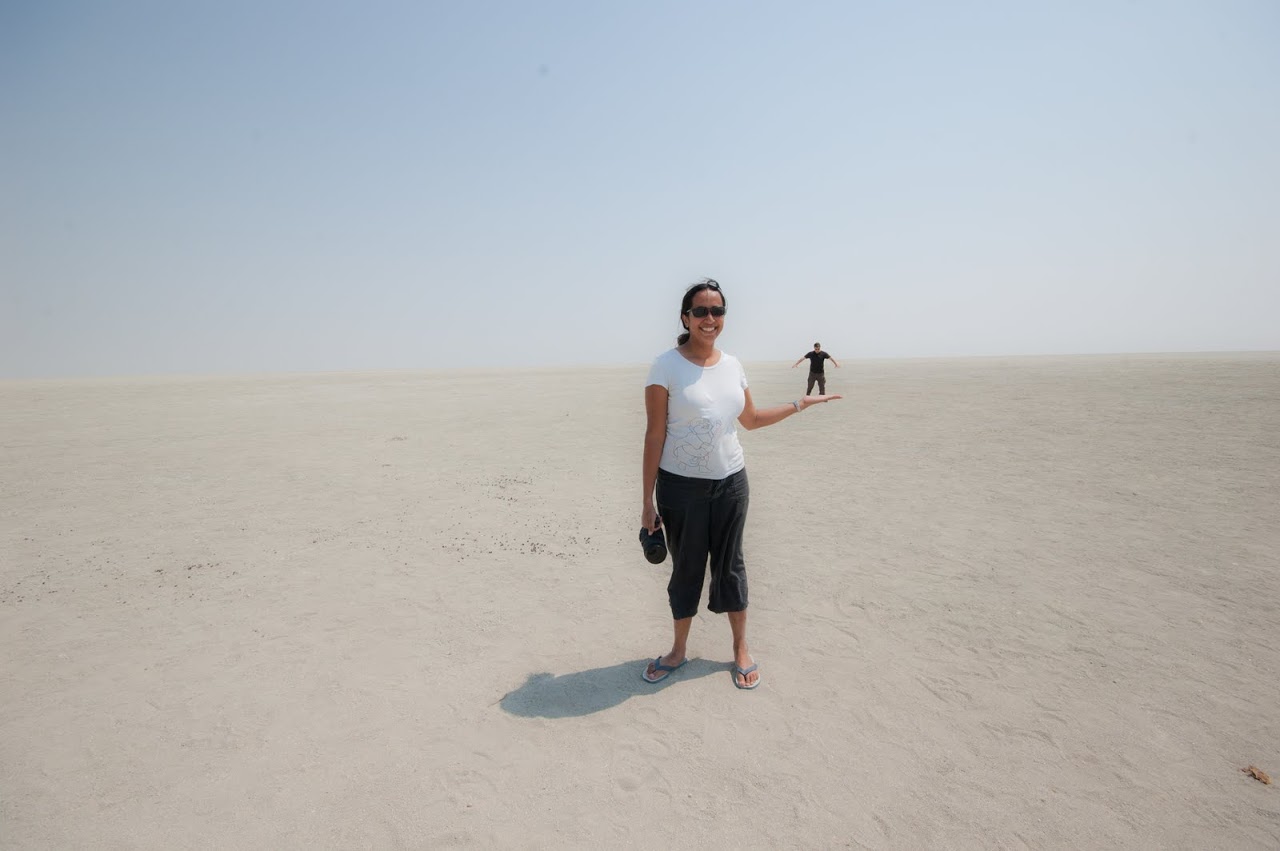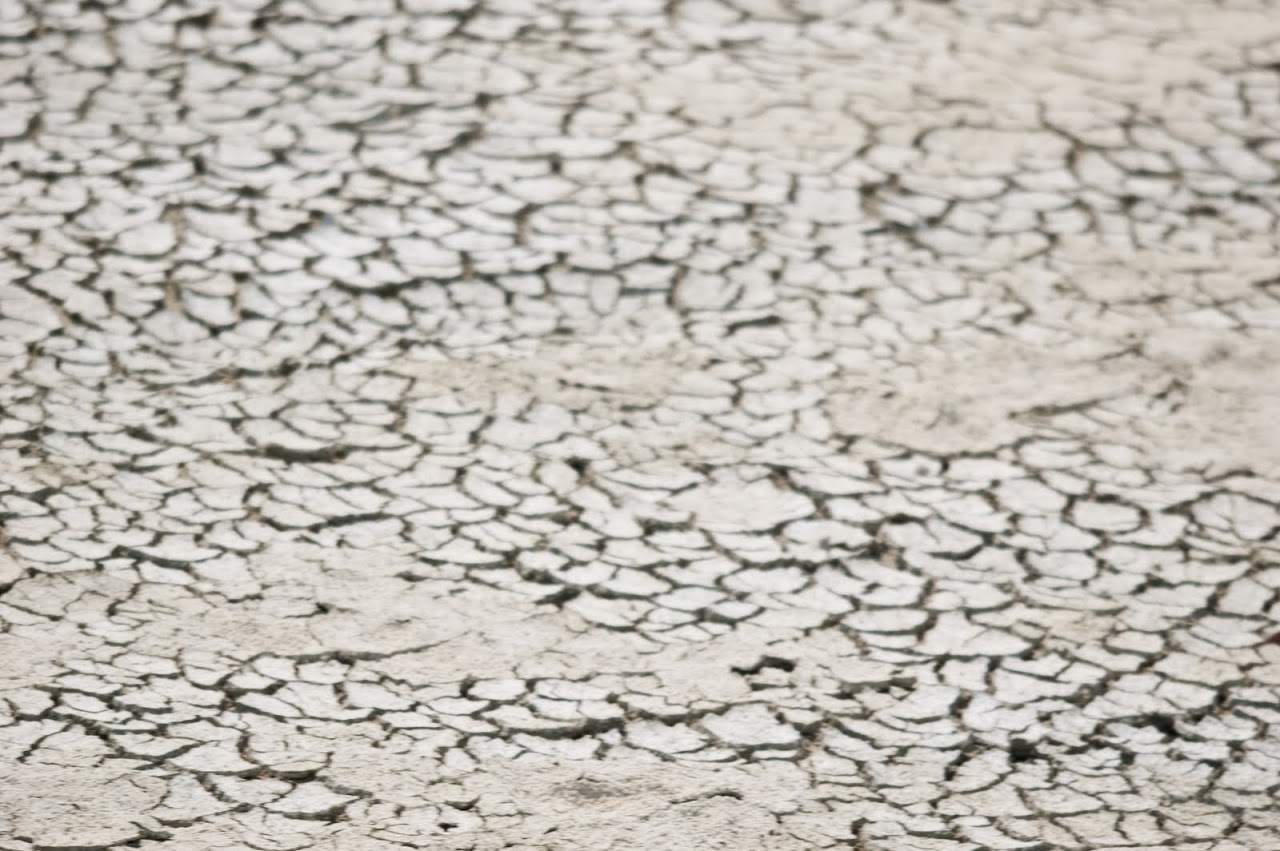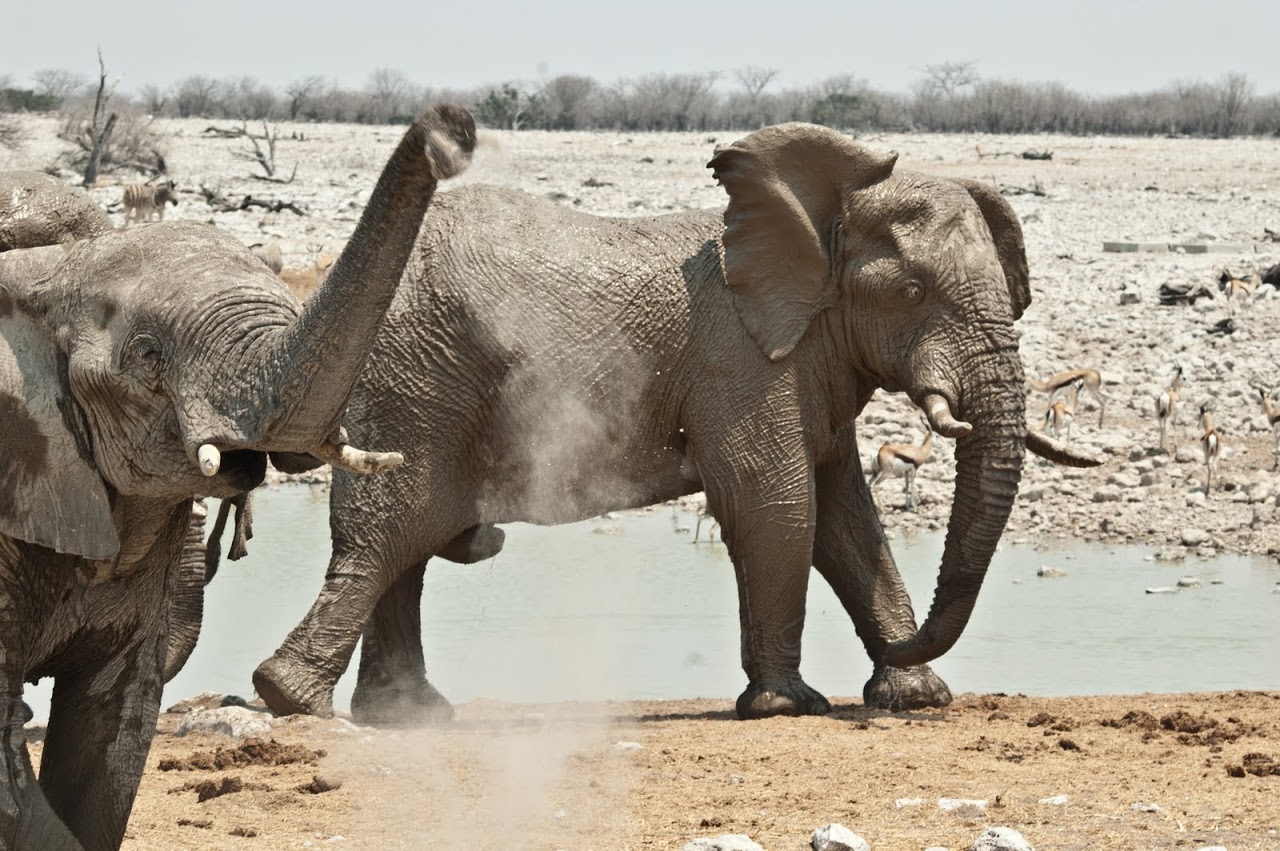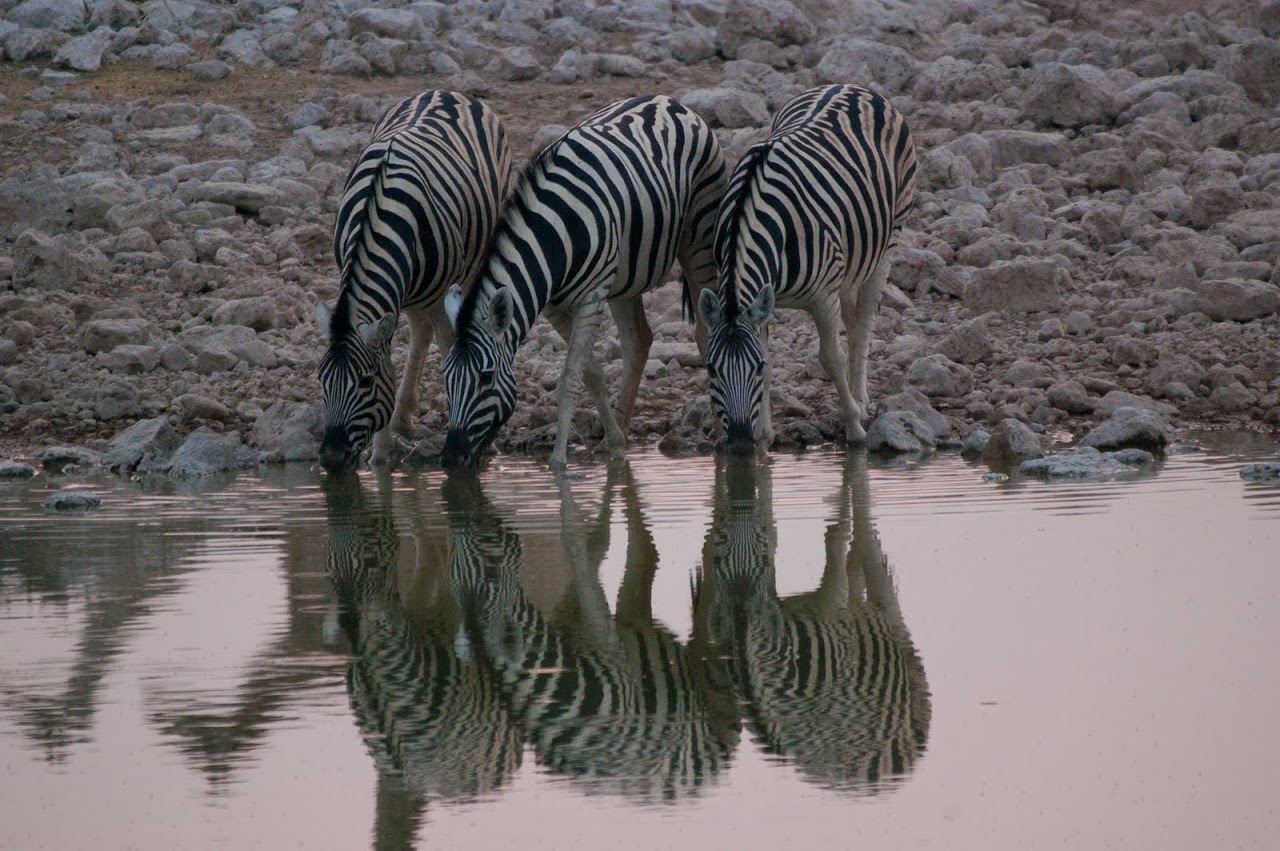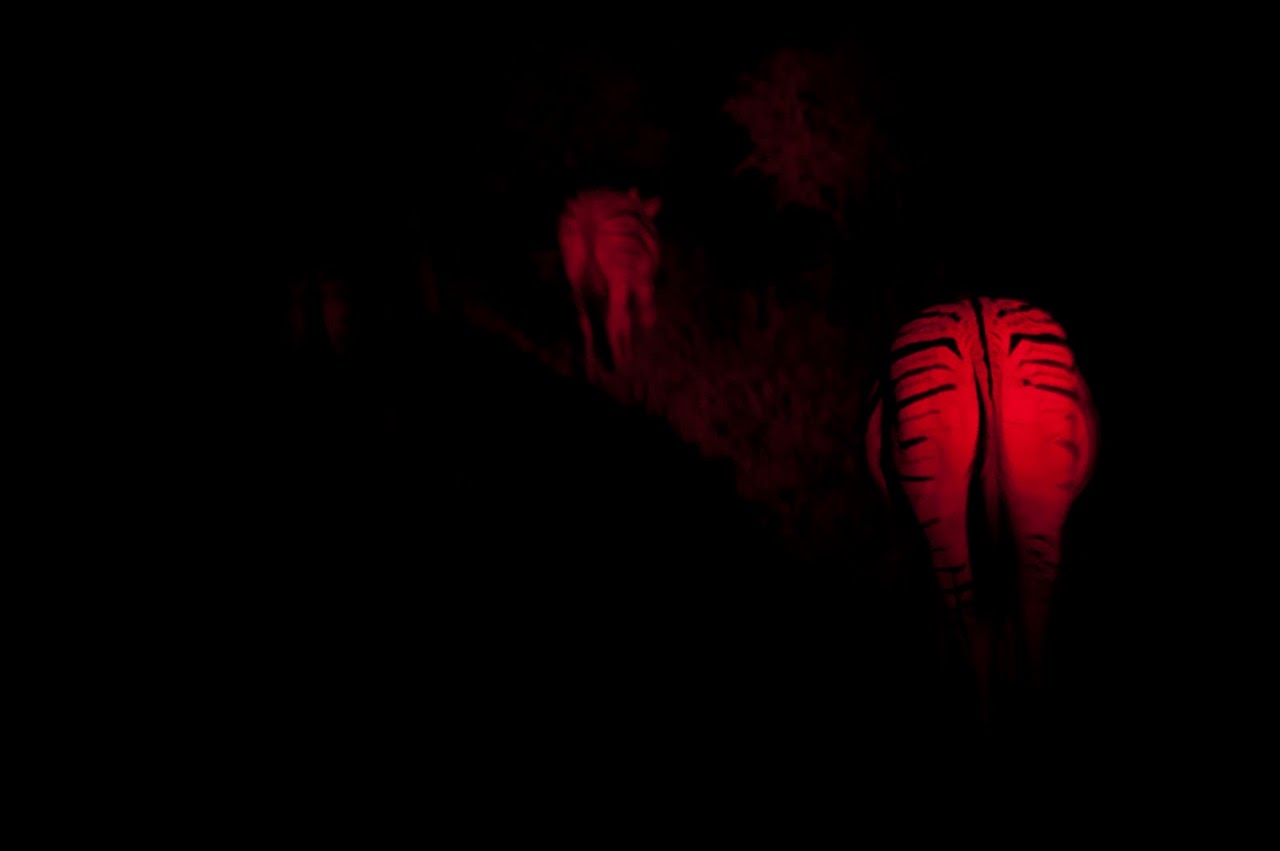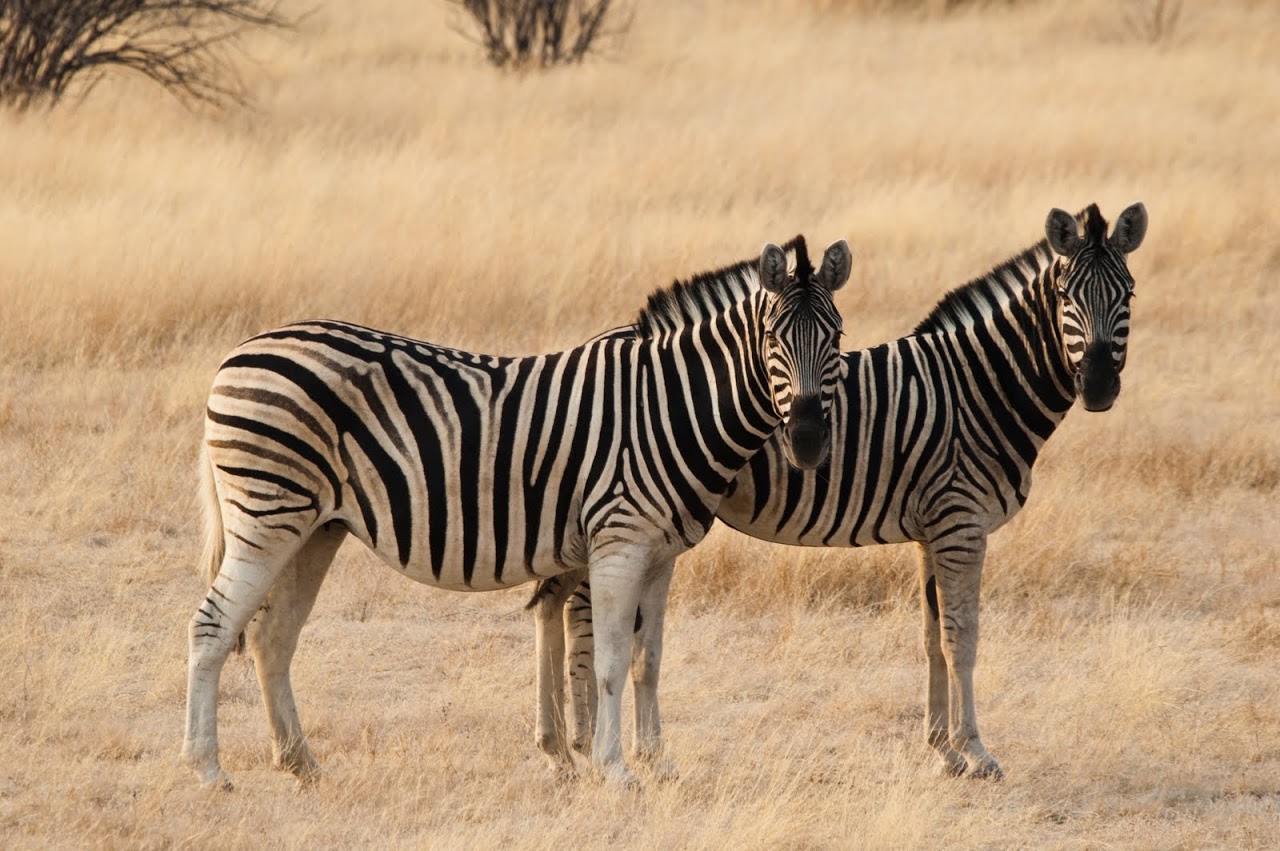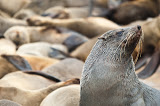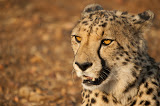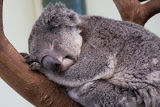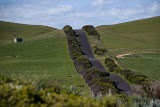Etosha Okakueje watering hole
I am a National Geographic addict. My parents used to order the magazine when I was a kid and I would read the whole thing cover-to-cover every month. Patrick, knowing my love, ordered me the entire collection on DVD for Christmas. The pictures and writing in National Geographic inspire me to be a better photographer and writer.
Oryx at Etosha
But, one of the problems with National Geographic (or any wildlife magazine, for that matter) is that they make game viewing look too easy .
Springbok, Etosha
When I flip through the pages of National Geographic and look at the amazing shots of cubs and lions, I don't think about the patience required to take these pictures, the time it takes to find animals, and the hours spent waiting for the animals to do something cool and exciting. Now that we have been out game viewing, I understand the challenges involved.
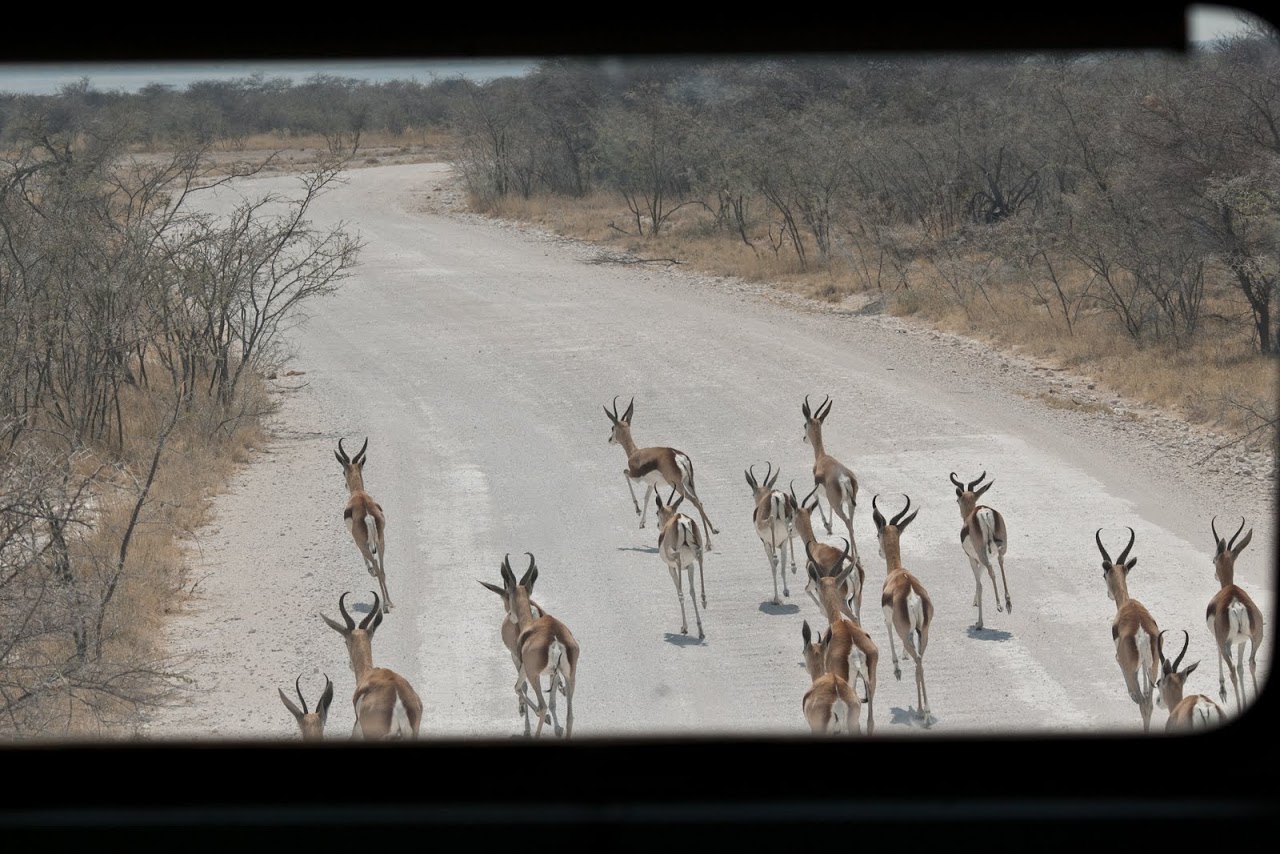
|
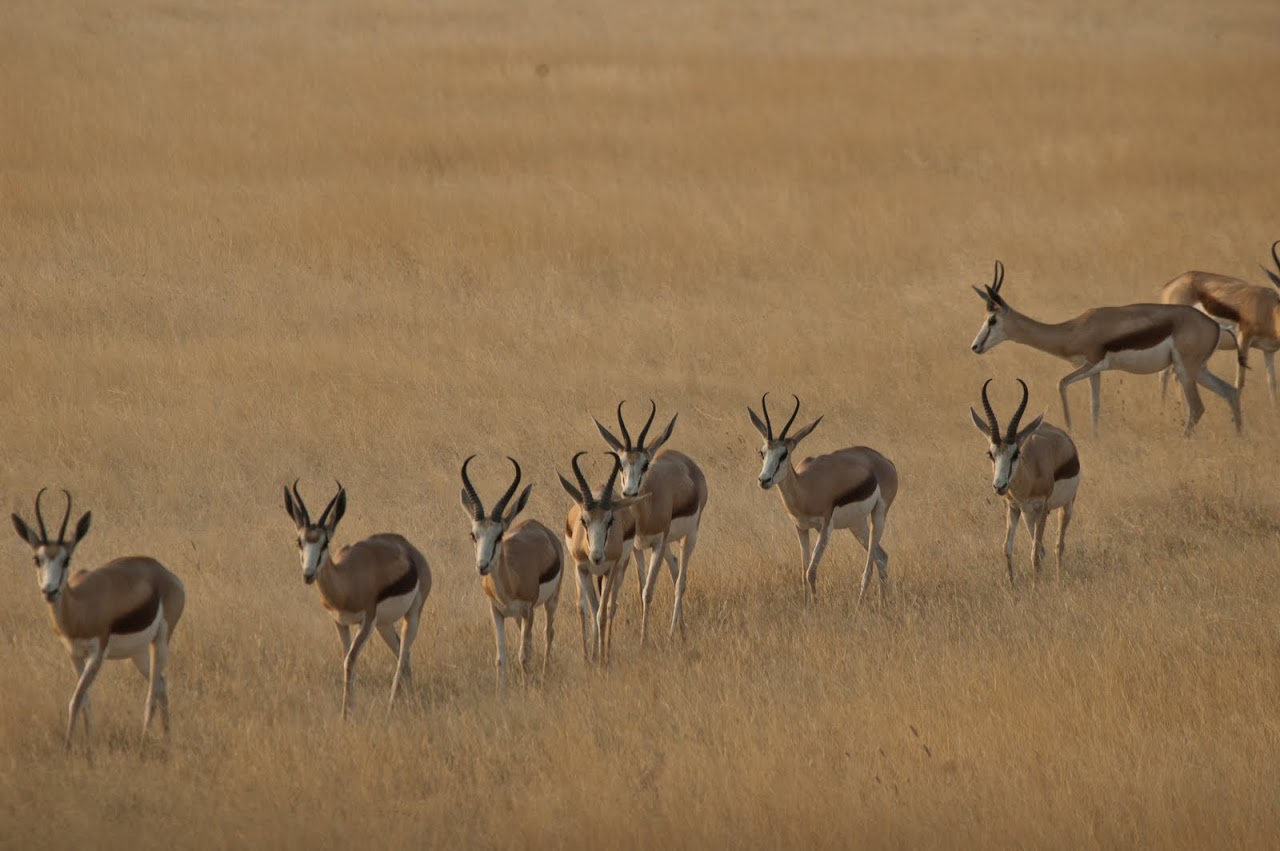
|
Herd of springbok from the front window and walking in a line
Our first three hours at Etosha National Park in Namibia, for example, were a bust. We sat on the overland truck with all the windows wide open, our binoculars out, and cameras at the ready, but didn't see more than a few dozen springbok, the ubiquitous antelope in that game park, and some zebra and giraffe.
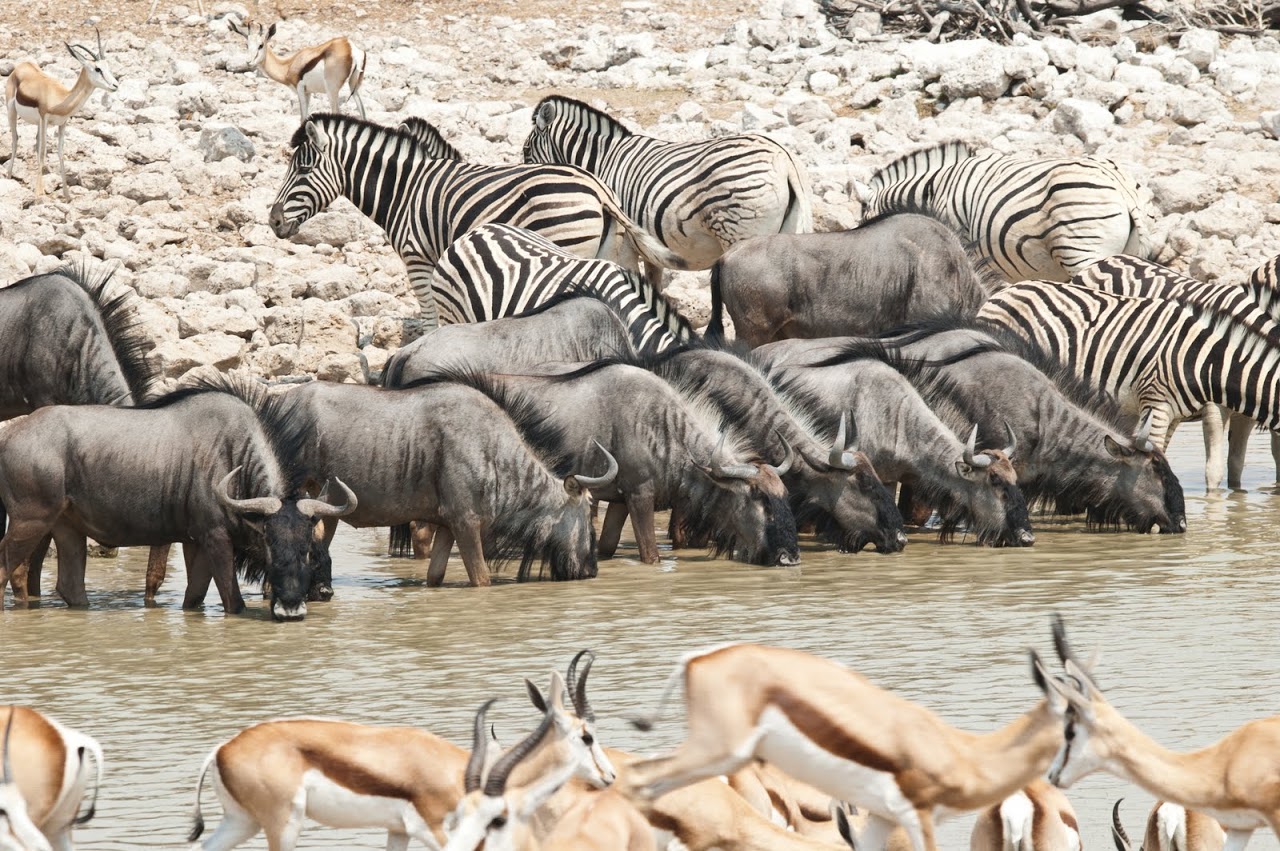
|
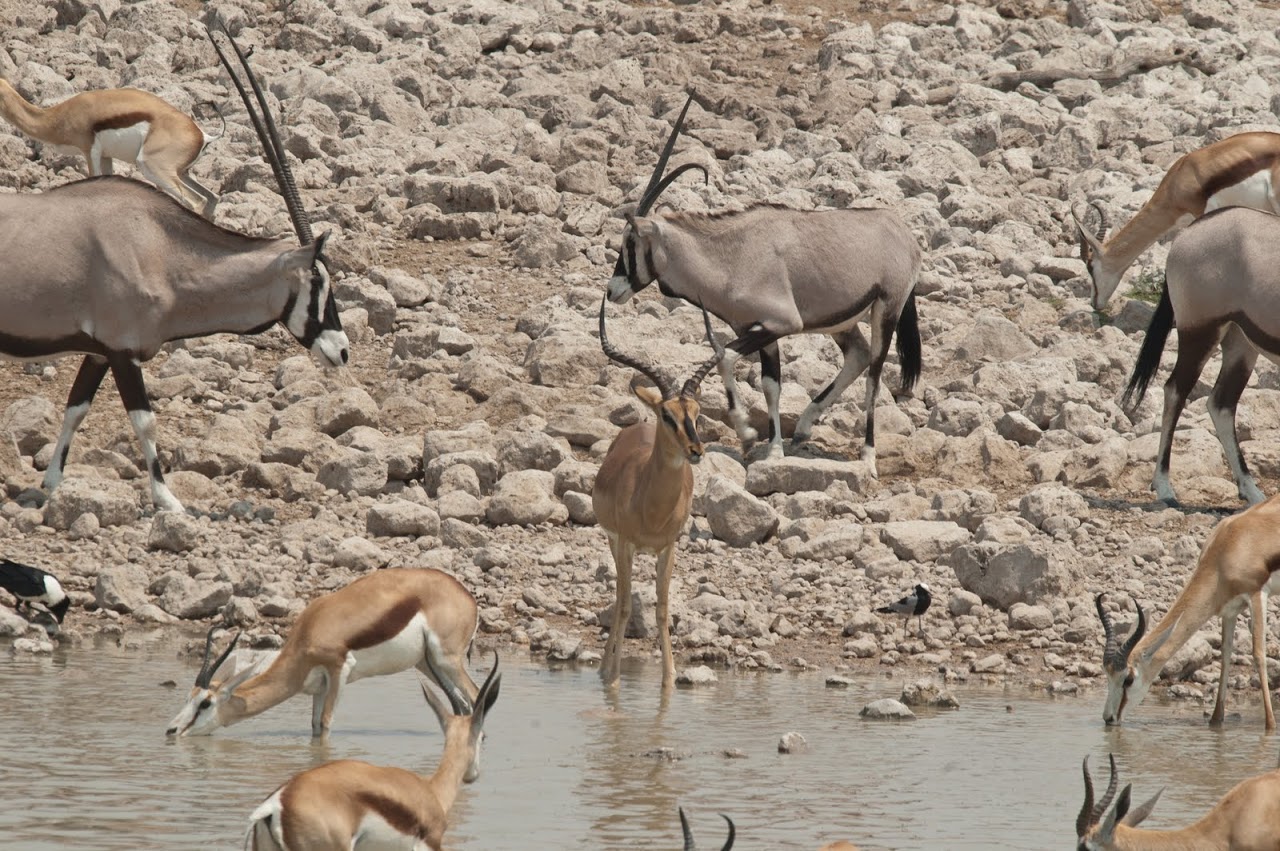
|
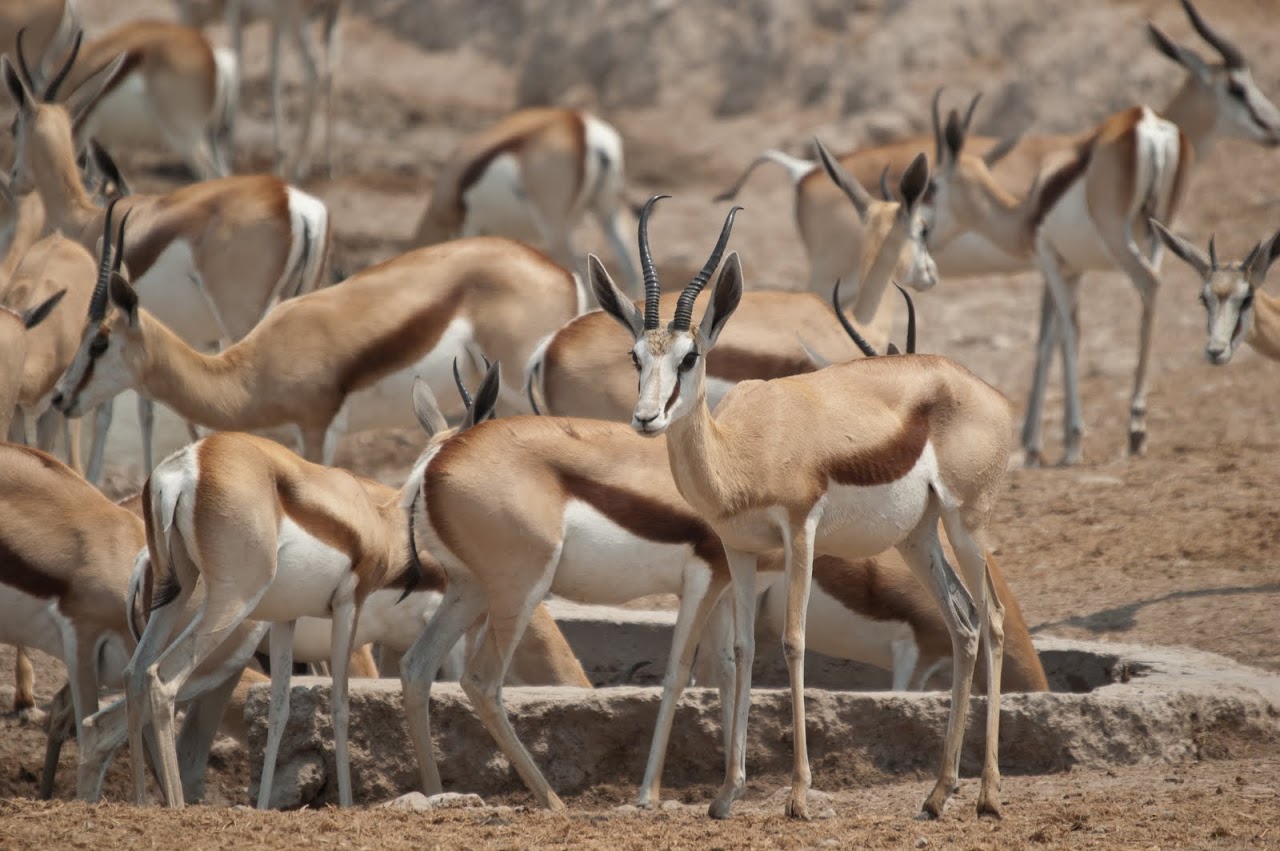
|
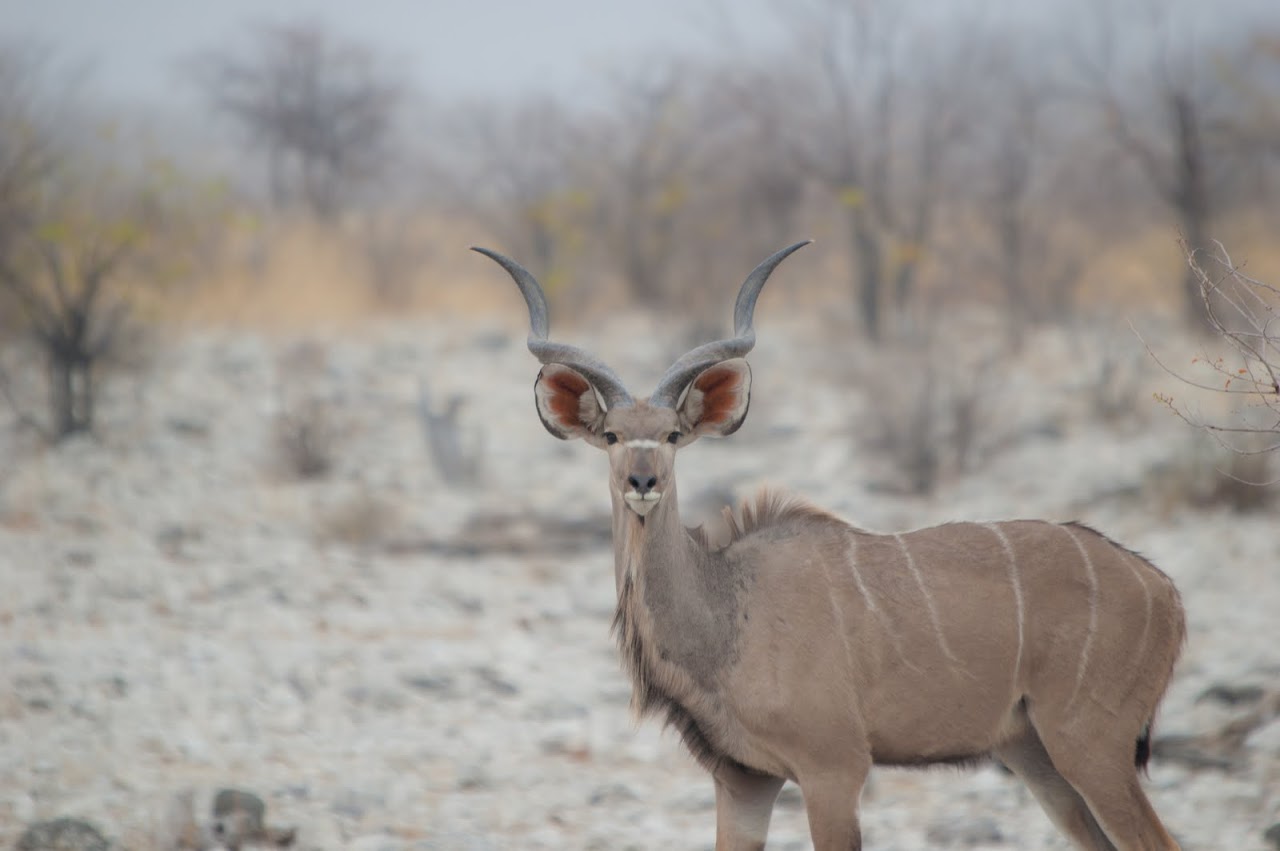
|
Then, we arrived at the watering hole at Okakuejo, described by Jacques, our group leader with our Africa-in-Focus overlanding excursion, as "the best watering hole in Africa." He wasn't kidding.
Me holding Patrick at the salt pans
Namibia is one of the driest countries in the world, with over 300 days of sunshine on average in the year, meaning that the animals across the huge national park flock to the few manmade watering holes across the park in the dry season.
Salt pan
We were there in October, one of the driest months of the year, when the salt pans were long stretches of flat white nothingness, the grass was yellow and brittle, and the animals needed the year-round water afforded by the manmade watering holes.
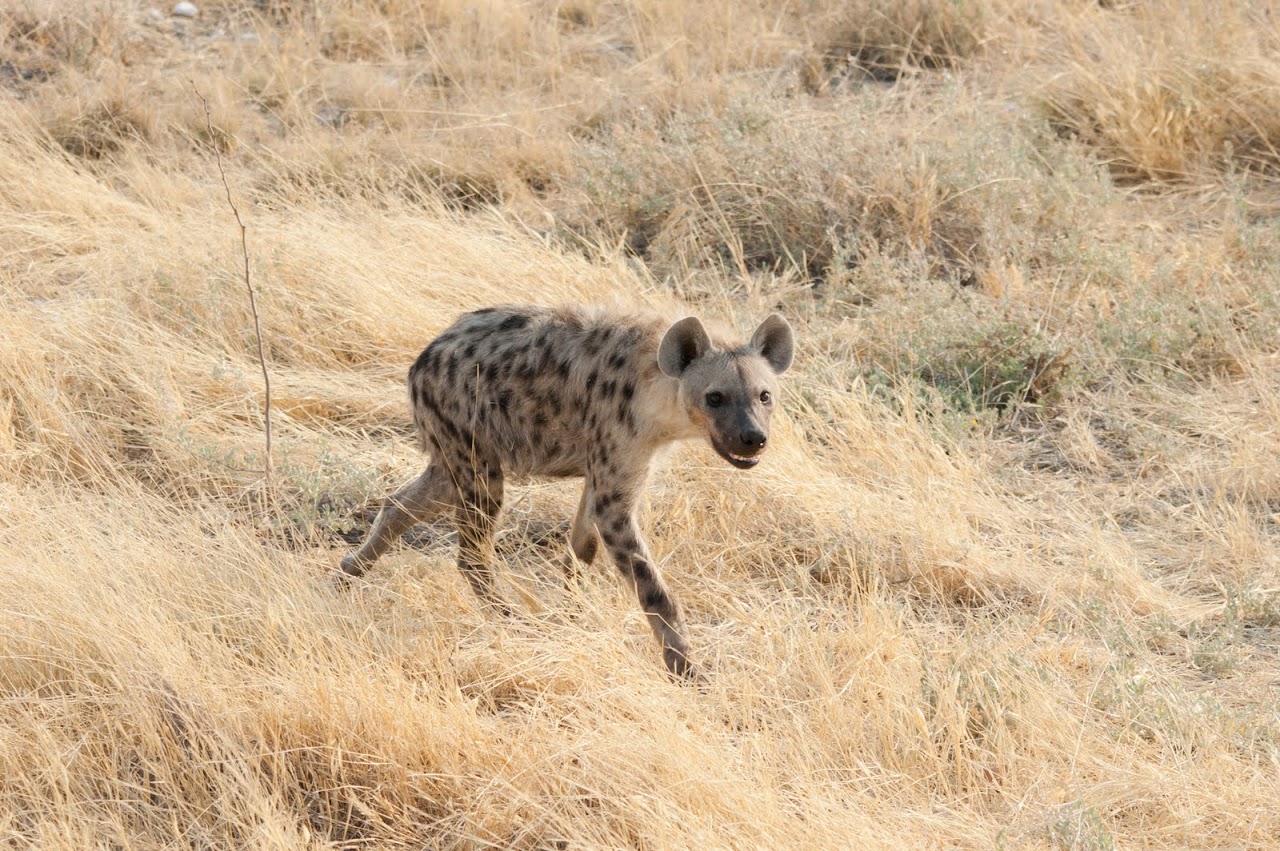
|
|
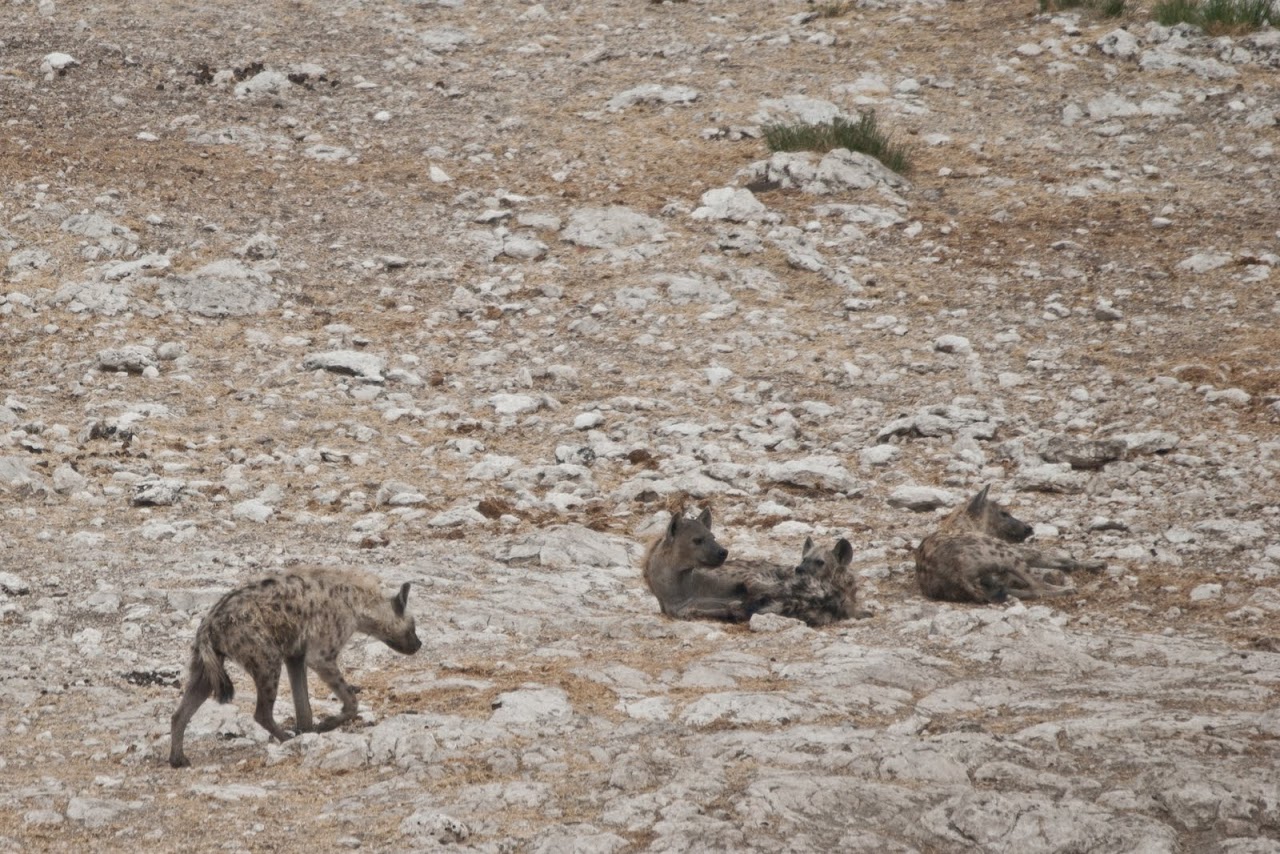
|
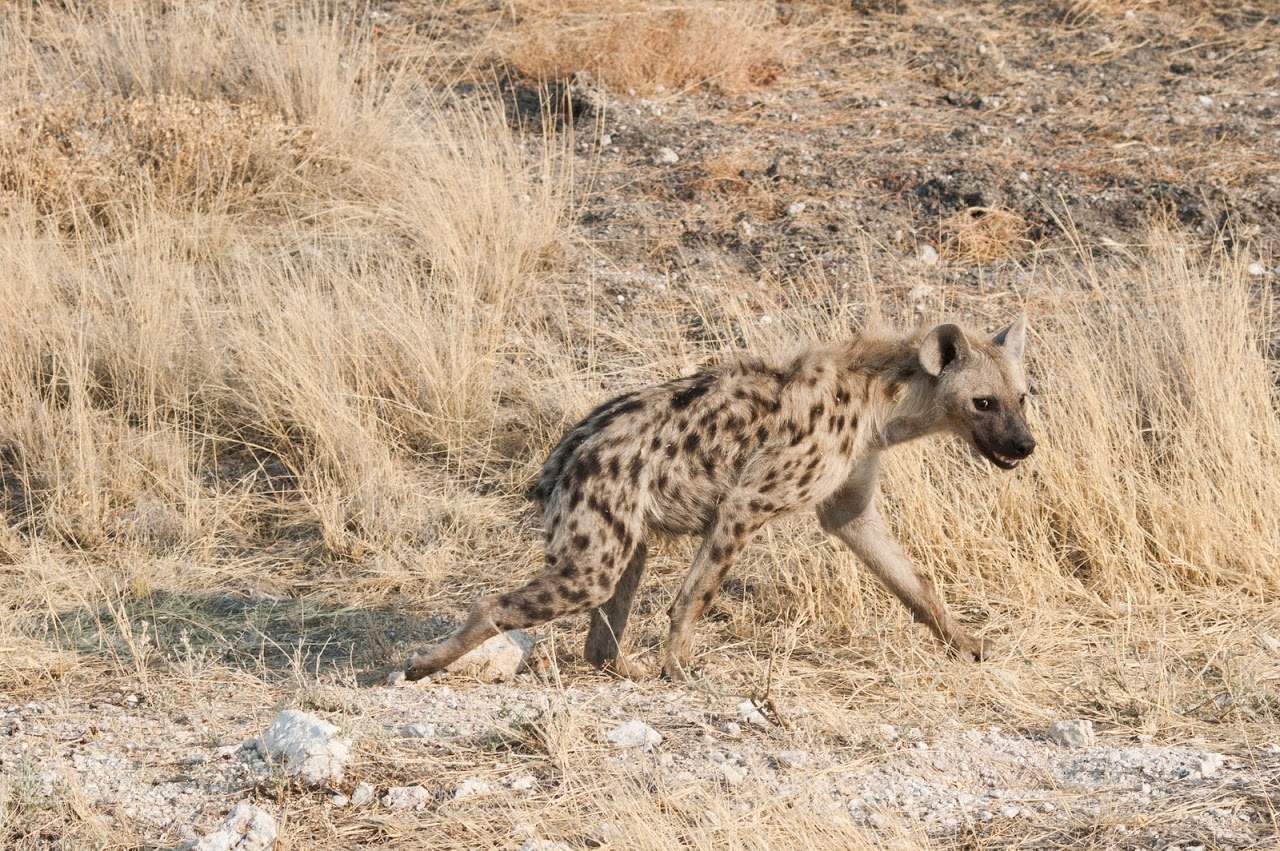
|
Hyenas
At dawn, the hyenas, with their wicked grins, drank their fill before they found a place to sleep during the day.
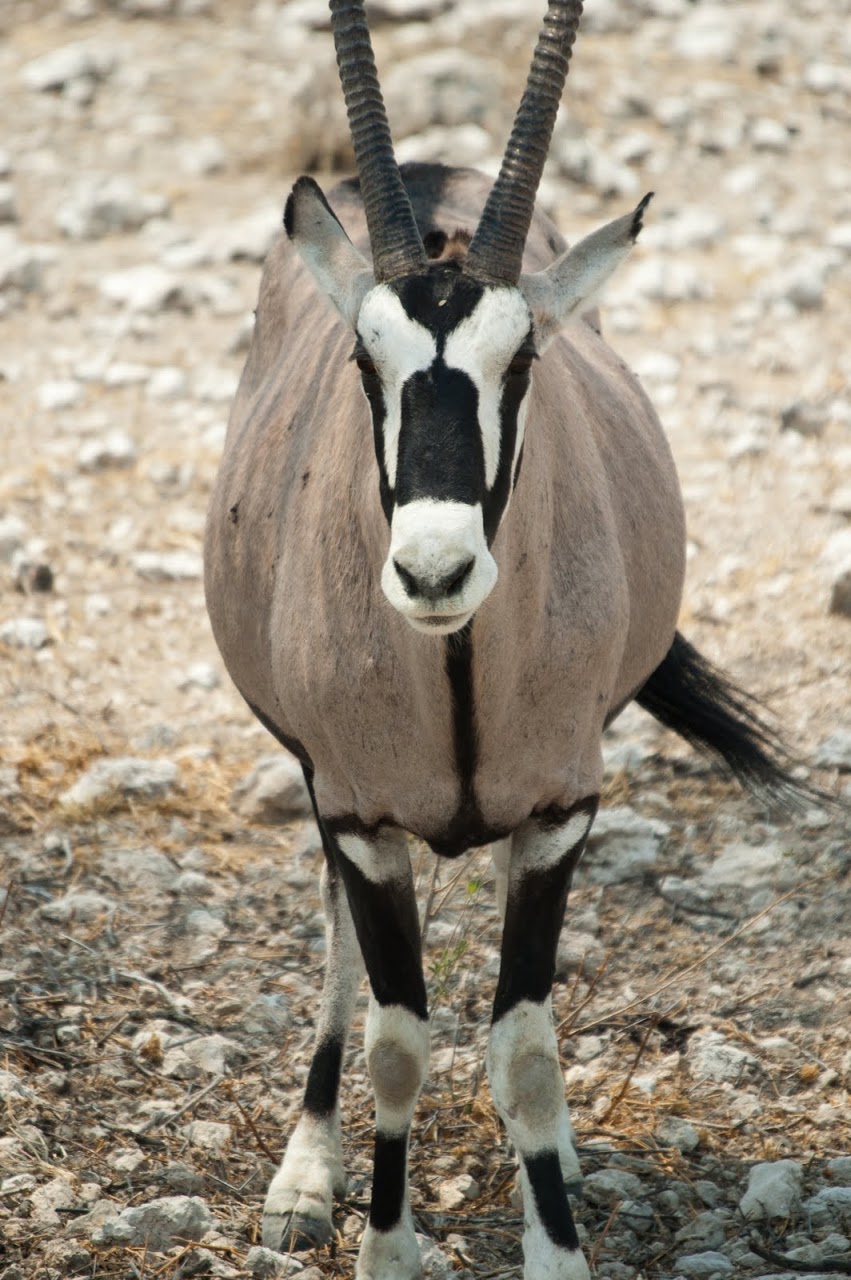
|
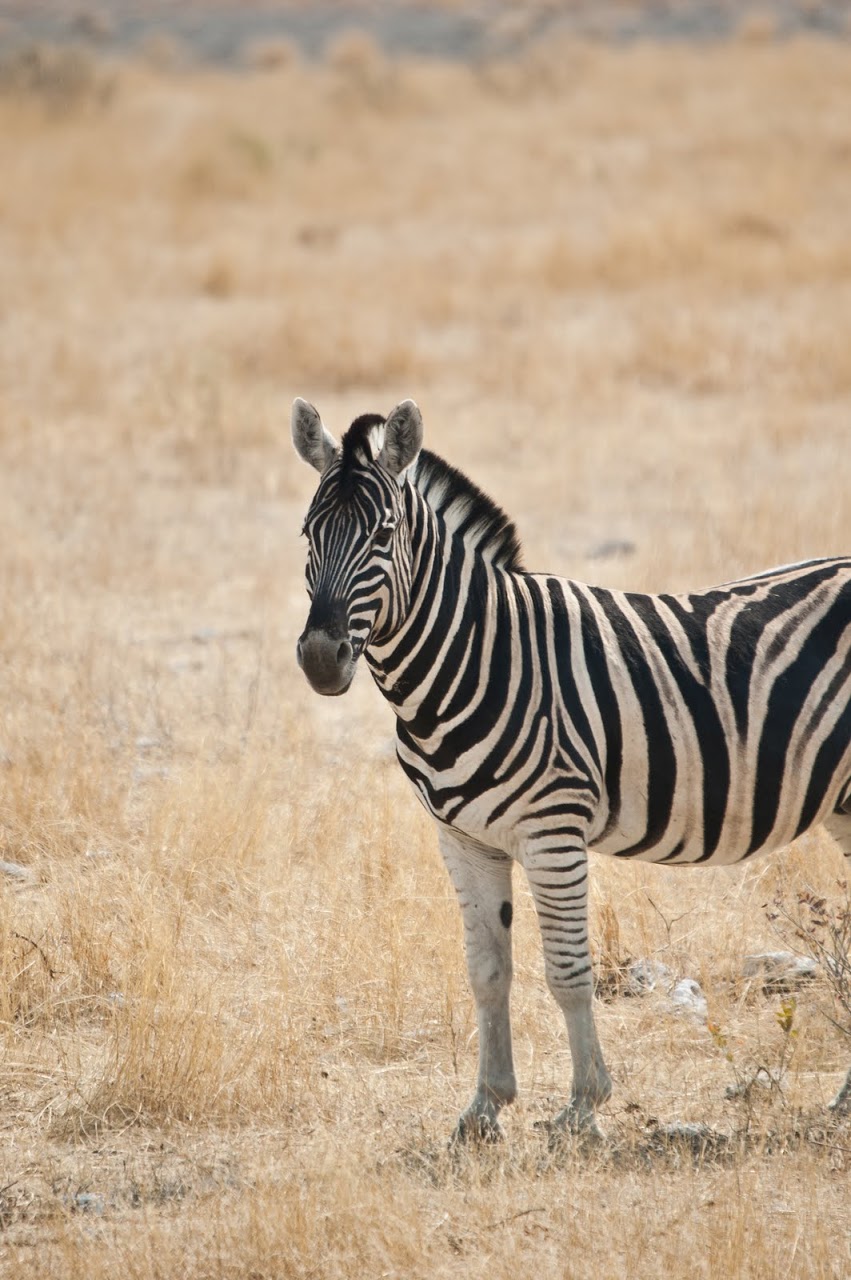
|
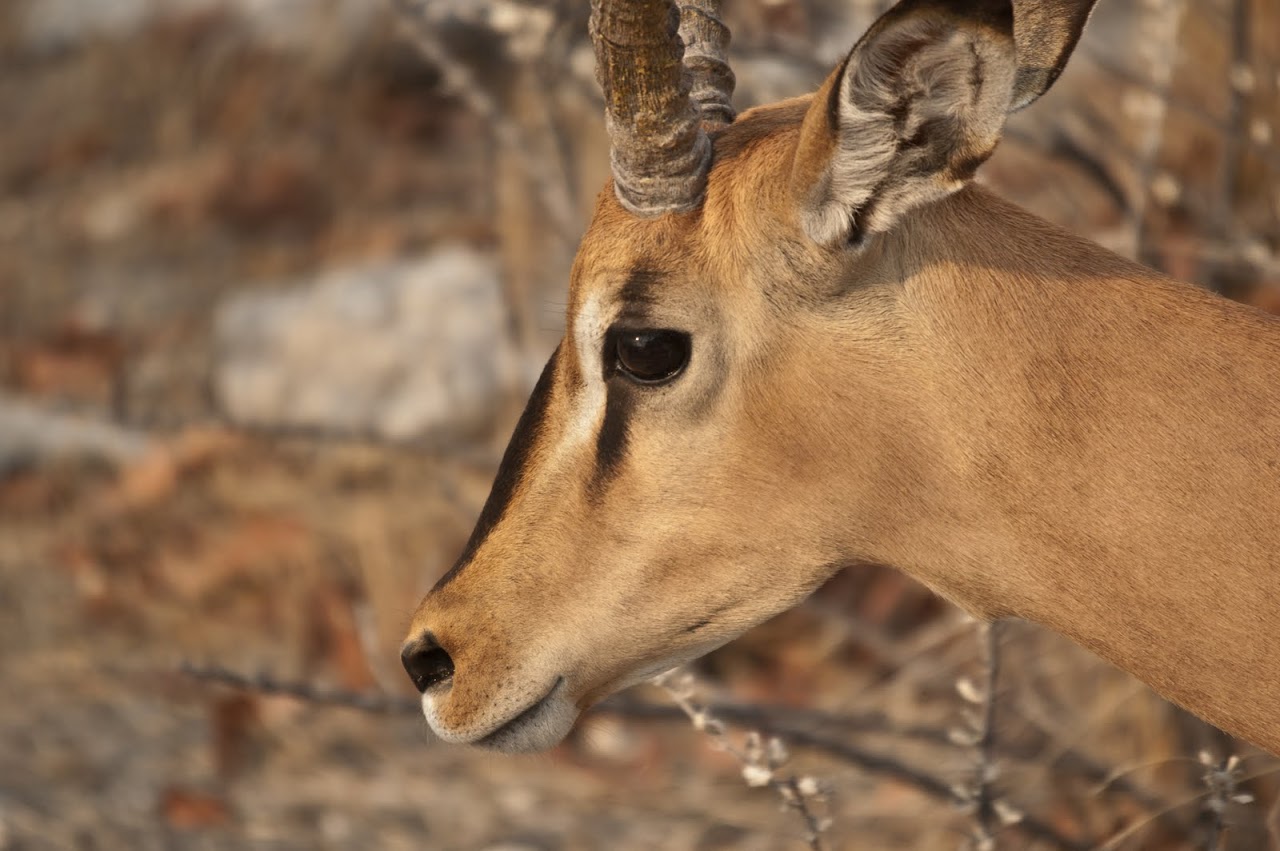
|
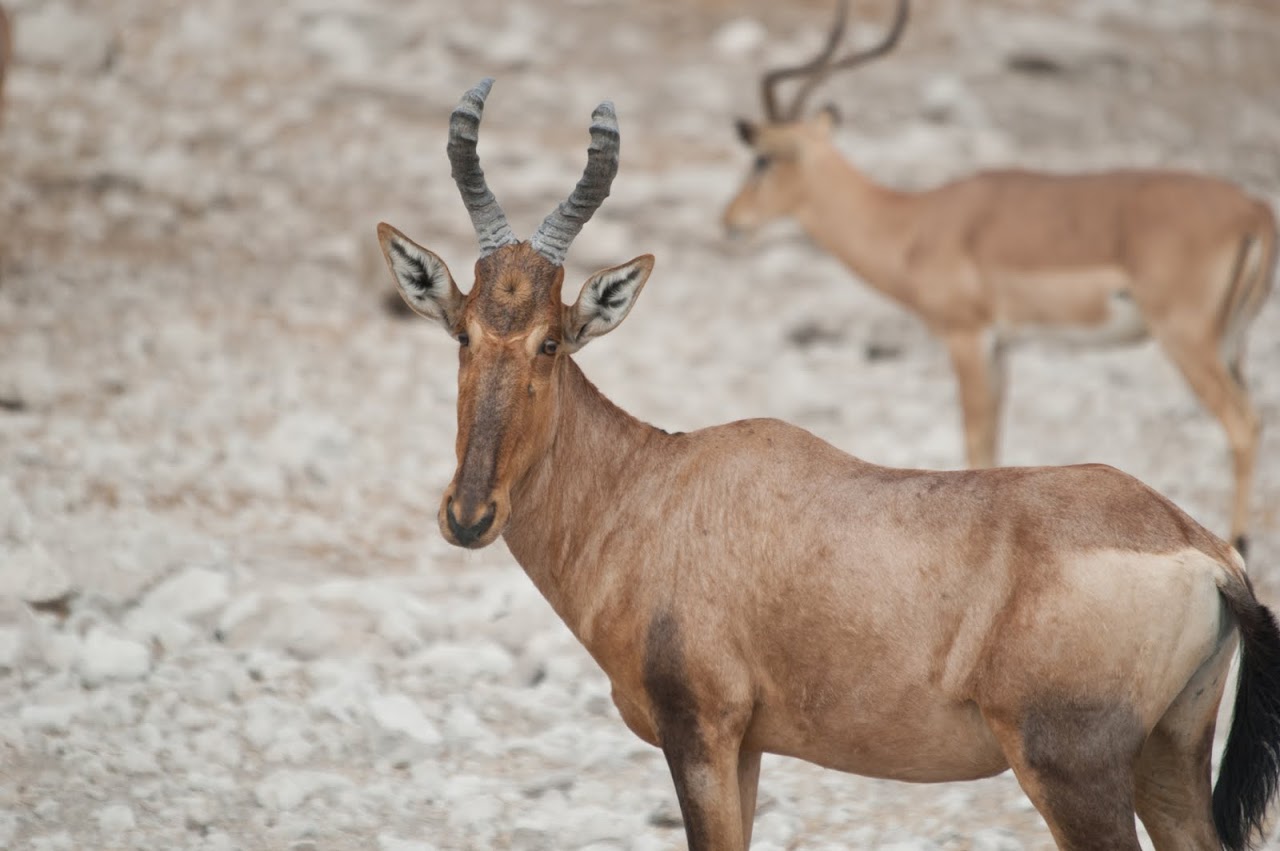
|
Oryx, zebra, black-faced impala, and another antelope whose name I can't remember
Then, the other animals began filling in, the antelopes and zebras arriving in herds while the coyotes prowled for small prey amongst the masses.
Elephants at watering hole
When the elephants arrived at the watering holes, the other animals (very smartly, I might add) moved away.
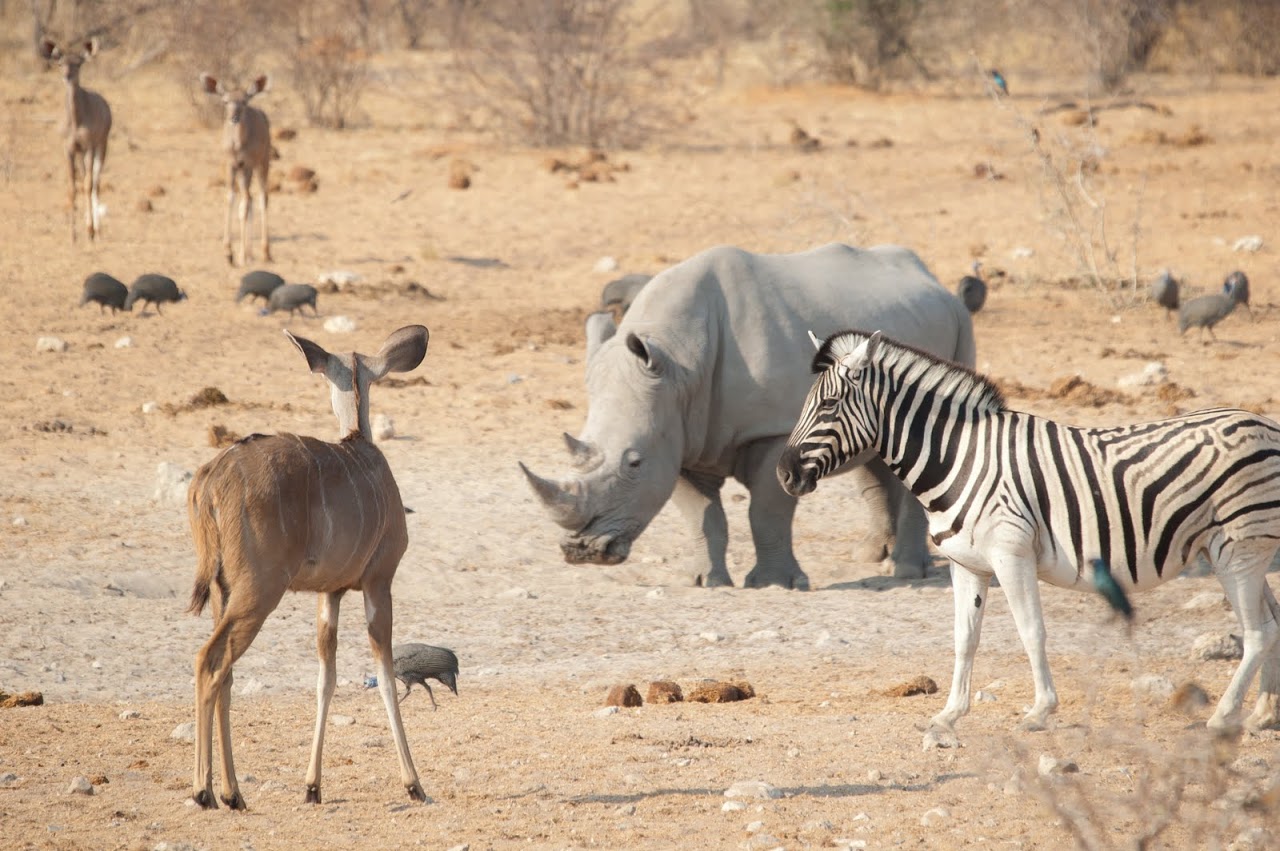
Rhino, zebra, and nyala at the watering hole
One afternoon, we drove to another watering hole, where we captured this picture of a rhino, zebra, and nyalas. a type of antelope with Charlie Brown ears and white stripes This is the sort of thing that we saw at Etosha's watering holes that makes game viewing look so easy.
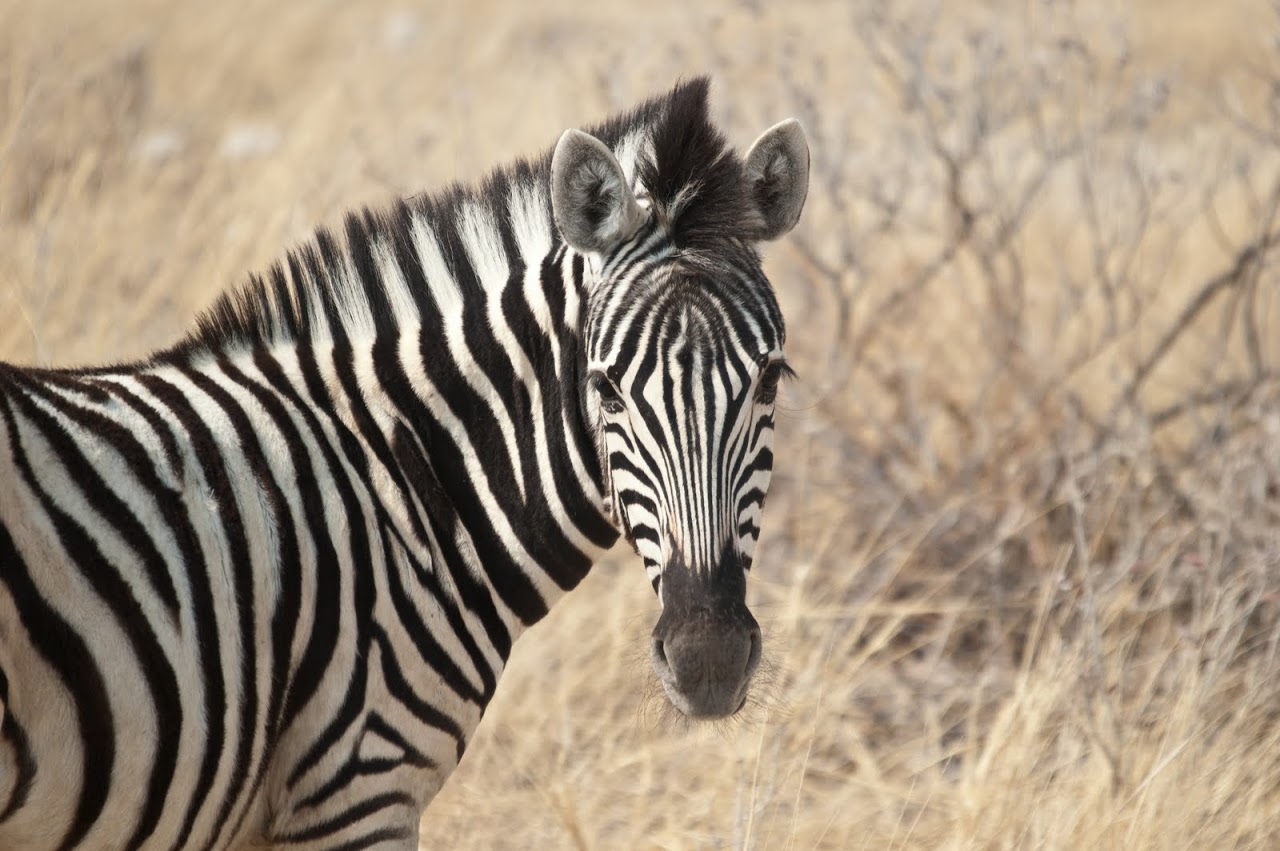
|
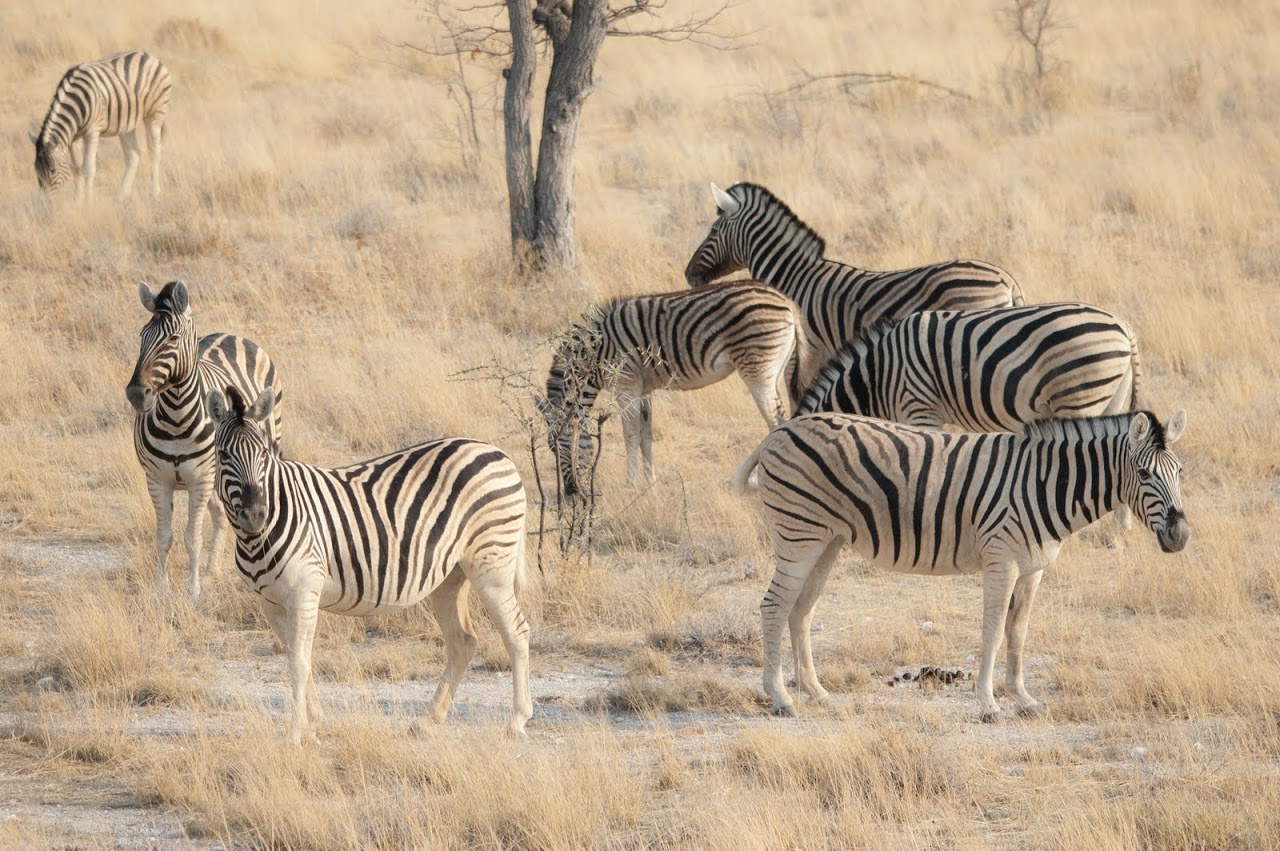
|
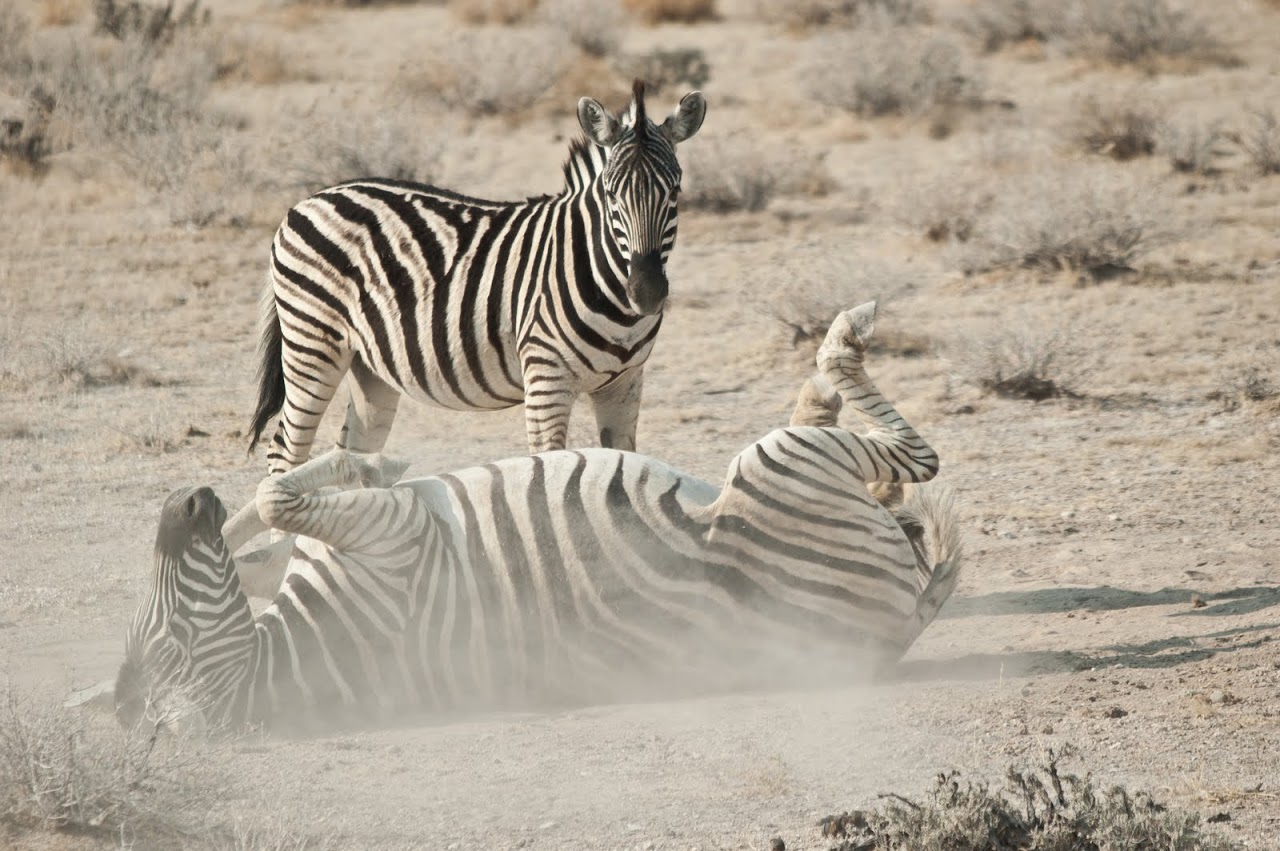
|
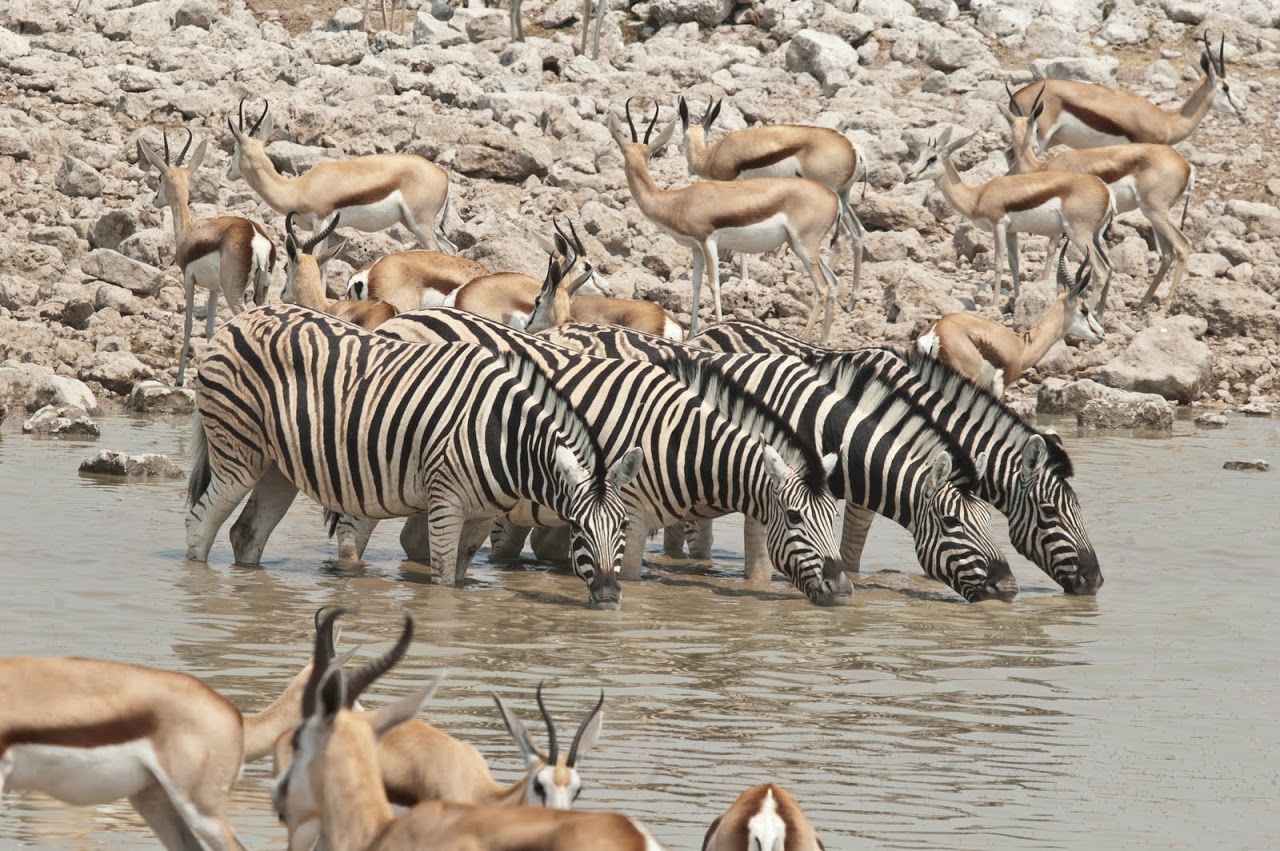
|
Zebras
I should just show you pictures of those striped zebras that we found everywhere in Etosha.
Zebras drinking in the evening
The show really begins when the sun sets. The animals come to the water at dusk, thirsty after spending the day hiding from the harsh sun.
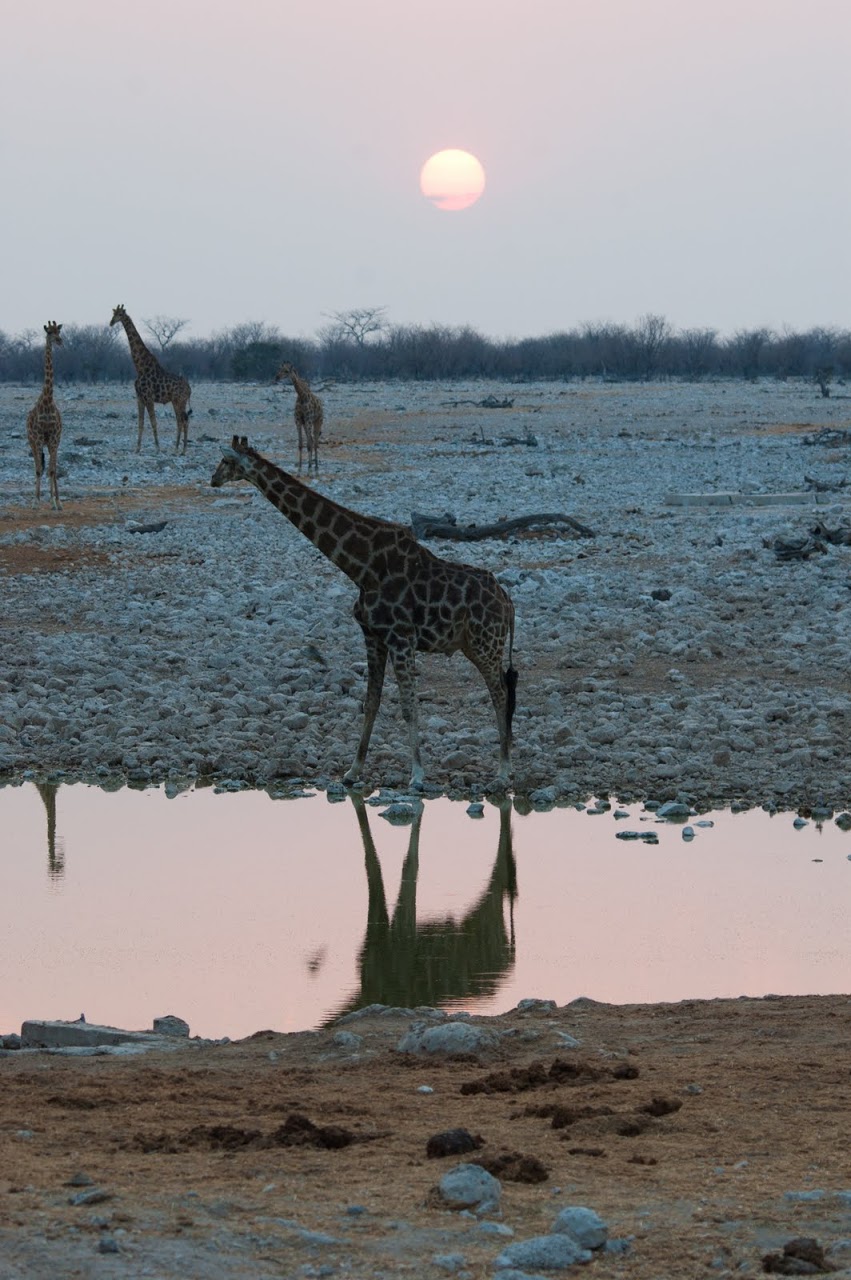
|
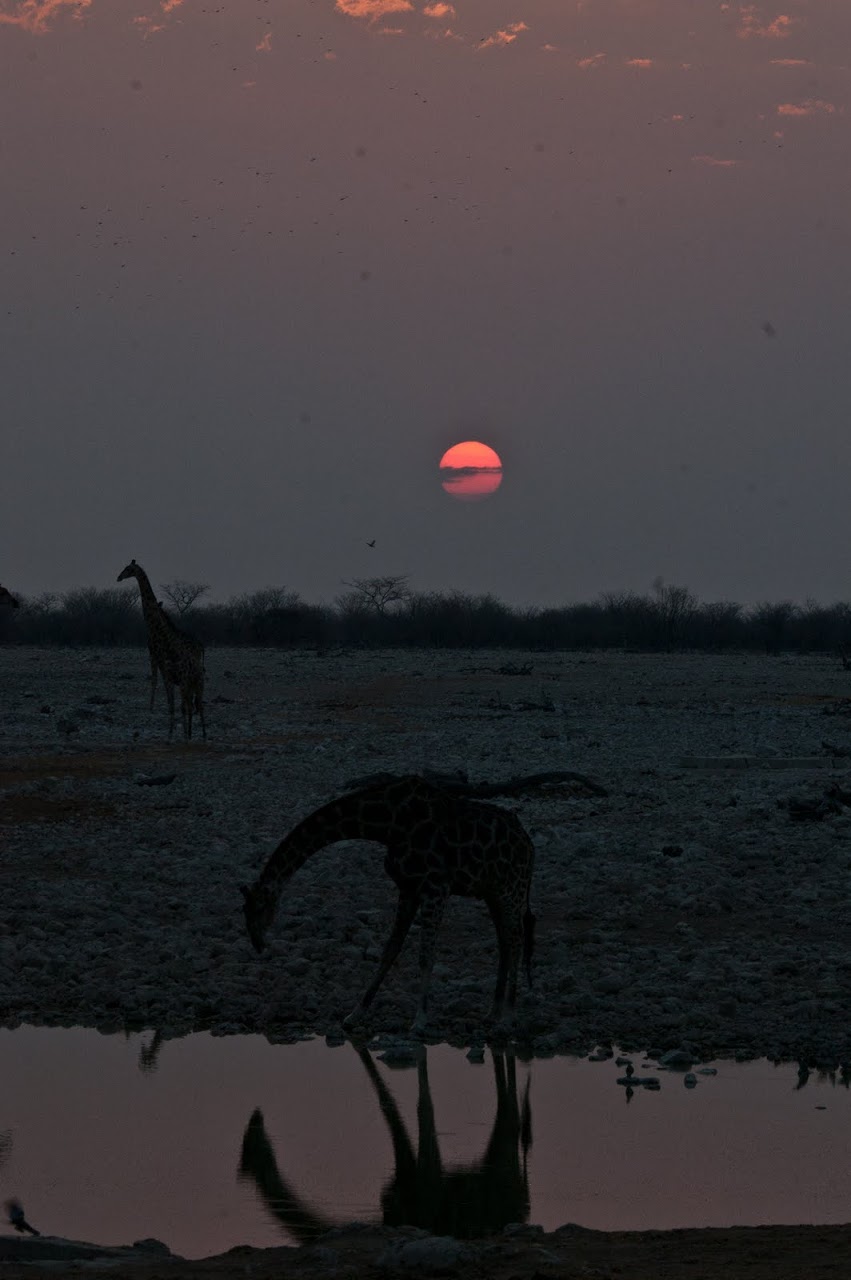
|
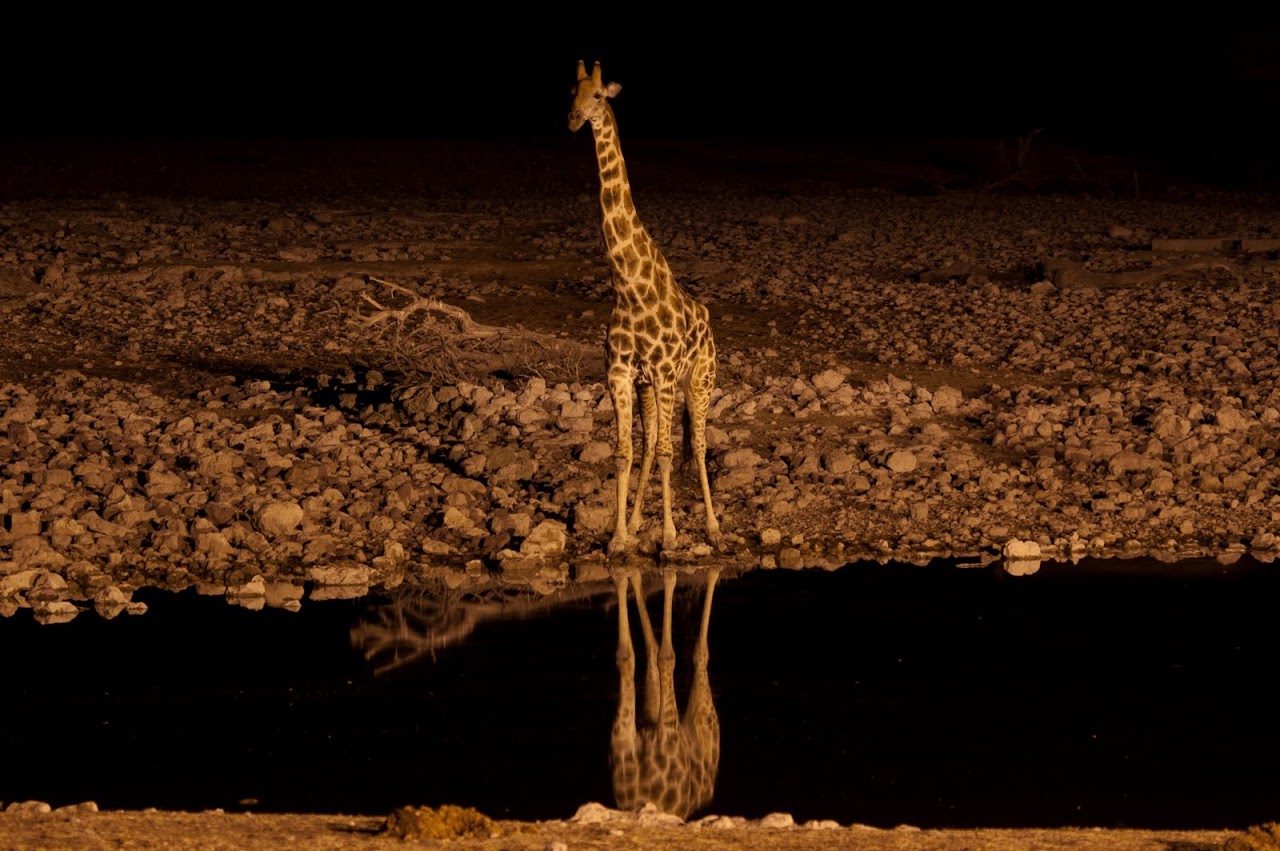
|
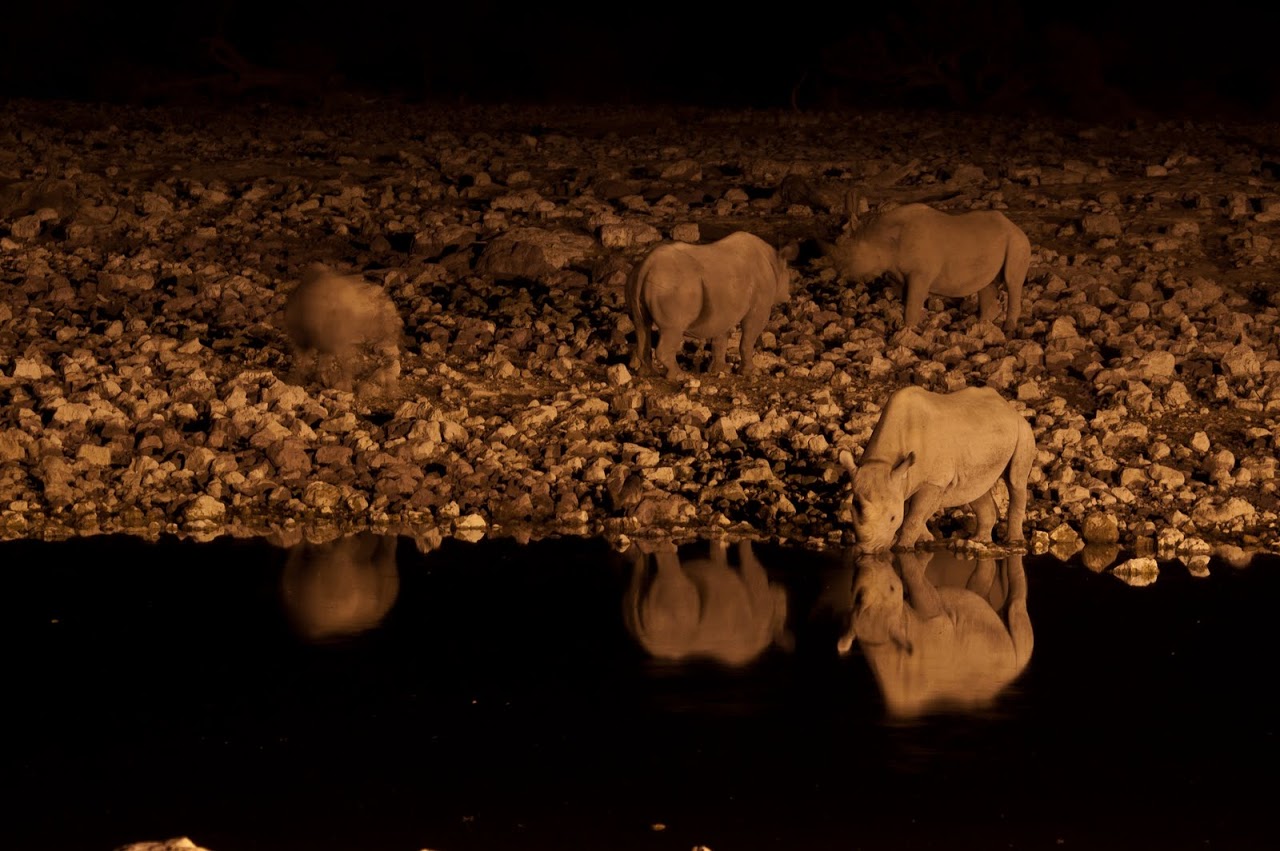
|
The Okakueje watering hole is floodlit and we spent the first night enthralled by the succession of animals that came in. At 5:00, a herd of giraffe arrived, then at 6:30, the rhinos, then at 9:00, lions (which I'll tell you about later this week), and then at 11:00, a huge herd of elephants, as if they had made appointments to drink.
Zebras on a night drive
Later in the week, we took a night drive, where we searched for nocturnal animals. We drove for an hour and half, shivering in the cold darkness and wrapped in multiple blankets, but did not see much more than a number of hyenas, a wild cat that looked very much like a domesticated house cat, and zebras and giraffes in the eerie red light.
Zebras looking at us
But, that just goes to show how varied game viewing can be. Sometimes, the animals are there, ready to be photographed, standing in perfect symmetry, as if posing for us. Other days, they refuse to appear and we scratch our heads, wondering how the folks at National Geographic get those amazing shots.
* Our trip was sponsored in part by Africa-in-Focus but they did not ask us to write this post or any part of this post. As always, our opinions (both good and bad) are our own. If you are interested in our perceptions of the expedition in general, check out our Overlanding 101 post where we provide a detailed review of the trip.




